THE OLYMPIAN & PARALYMPIAN

XVIII OLYMPIAD, TOKYO, JAPAN, OCTOBER 10-24, 1964




U.S. Olympians and Paralympians Association President
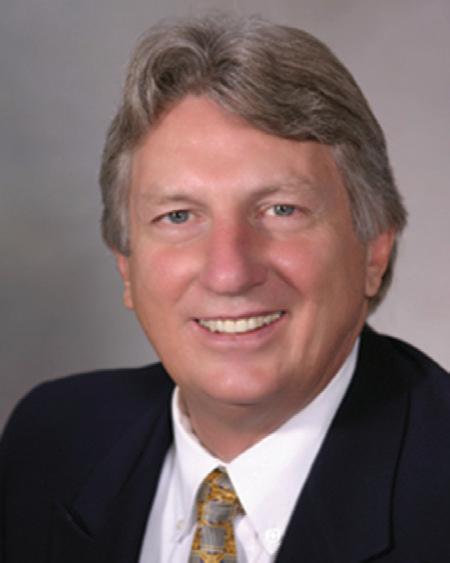
This is my last letter as President of the United States Olympians and Paralympians Association and I reflect on how I became involved in alumni activities, then look forward to our newly elected officers and the Tokyo 2020 Olympic and Paralympic Games this summer.
I have been blessed with invitations to events all over the world and in 1998 I was especially intrigued by the first Congress of Olympic Winners held in ancient Olympia. Athens had been selected for the 2004 Games and I had never visited Greece let alone Olympia, home of the ancient Games. I was the only athlete from the United States, probably due to the terrorist attacks in Athens at that time, but I was joined by medalists from many other countries.
Ceremonies honoring the visiting Olympians were held in Athens, Patras, and Tripoli as we moved towards the Congress itself at the Olympic Academy. We heard presentations about the history of the ancient Olympic Games, the threats of doping to sport, and of Olympian goodwill activities around the globe. At the end of the Congress, it was decided to form a new World Association of Olympic winners and I was elected to serve as Secretary General. We held our first organizational meetings with our Greek president Tassos Boudouris, and officers from Russia, Mexico, and Australia, to represent the five continents. With the support of the Greek government through 2002, we held meetings around the world and held community activities to promote sports everywhere we went.
We disbanded in 2002 when we lost our funding and I became involved in the United States after I met Cindy Stinger at the 30th reunion of the 1968 Olympic Track and Field Team in New Orleans, where she had encouraged me to learn about the U.S. Olympians Association. I was elected as a Vice President in 2005 and began serving under President Willie Banks. I began working alongside Micki King, Anne Cribbs, Gary Hall Sr, Connie Paraskevin, and Carol Lewis. Willie challenged us to develop Olympian projects to support our mission within the United States. I will never forget the first U.S. Olympic Assembly and listening to the statement declared by Peter Ueberroth that the U.S. Olympians were the most underutilized asset with the family. We felt honored and challenged to change that.
During Gary Hall’s term as President, we began to work on how to include the Paralympians as members of our Association, knowing well the barriers they experienced and recognizing the parallel path they followed to become members of the U.S. Paralympic teams. We knew that inclusivity and diversity would makes us stronger, and we would lead the world along with other Associations from Great Britain and Germany. As the U.S. Olympic Committee
became the U.S. Olympic and Paralympic Committee (USOPC), our athletes have grown in stature and we have earned a stronger, more effective voice with greater roles and responsibilities today.
I am very proud to have led our Association and could not have accomplished what we have without our outgoing officers, including Carol Brown, Anne Cribbs, Candace Cable, Charles Altekruse, Allison Baver, Carol Lewis, and Iris Zimmermann, including our past Presidents, Willie Banks and John Naber. This group of individuals have pushed us to new heights with honor and intelligence and I will never forget our journey. We have been held as a model of success around the world, with the leadership of our Manager, Cindy Stinger, and our strong staff of Christine Taylor. And thank you to our leadership within the USOPC, CEO Sarah Hirshland and USOPC Chair Susanne Lyons, for recognizing our value and the maturity we can bring to the family.
Today, we have new leadership coming in, to be led by President Caryn Davies, previously a Vice President, and new Vice Presidents – Olympians: Kibwe’ R. Johnson, Sharon A. Jewell, Lydia R. MurphyStephans, Bruce M. Furniss, Allison Baver, John C. Moffet, and Paralympian Bob Balk. This is a strong, well-balanced group that we will support to be successful for our Association.
The Summer Games are moving forward with Trials being held under the challenge of a global pandemic, keeping the athletes safe and healthy while adapting from the normal formats. While we are fortunate to experience fewer infections from COVID-19 due to increased access to vaccinations, other countries are not. This will be a unique and unforgettable experience no matter what happens.
I thank you all for your support of our Team USA athletes and encourage everyone to express your voice for our athletes and a healthy environment in your community!

Yours in Olympic spirit, Richard Fosbury
 By: Roy Tomizawa Sports Journalist
By: Roy Tomizawa Sports Journalist
He climbed the steps with the Olympic torch in his right hand, the torch’s base at shoulder height, and the cylinder sparking reddish-white, spewing smoke. Twenty steps. Forty steps. Sixty steps.
Yoshinori Sakai held an even pace as he jogged up the stairway to the top of the National Stadium. A hundred forty steps. A hundred sixty steps.
And finally, after climbing the equivalent of an 8-story building, with nary a slip or
stumble, Sakai stood next to a large black cauldron, faced the crowd, and cracked a huge smile.
Was it relief at making it to top without a spill? Was it exhilaration upon seeing the field filled with over 5,000 athletes from 93 nations and the stadium with over 70,000 cheering spectators, including the Emperor of Japan?
Certainly, those were two of the many feelings all of Japan felt that beautiful
Autumn afternoon on October 10, 1964, when Japan welcomed the world to the XVIII Olympiad.
Sakai, who was born in Hiroshima on the day an atomic bomb was dropped on his hometown, just did what Japan had done – symbolically climbed a mountain.
At the end of World War II, Japan had been a defeated, occupied nation in ruins. And yet, in only 19 years, the nation
recovered its economy, its standing in the world and its confidence so quickly that it could pull off the most logistically complex peacetime global event at the time, the Summer Olympics.
Memories of poverty, disease and despair were still fresh in the minds of Japanese adults. With great anticipation they worked hard to organize the games, transform the city and ensure a warm welcome for their guests from far and wide. With great concern they worried they would be revealed as a people who could not compete with the rest of the world.
That trying ambivalence bubbled to the surface on the penultimate day of the Tokyo Olympics.
It was Friday, October 23, 1964. The Nippon Budokan was packed. But resignation wafted in the air of this newly constructed arena of the martial arts.
Even though Japanese judoka Takehide Nakatani, Isao Okano and Isao Inokuma, had already taken gold in the first three weight classes the previous three days, there was considerable doubt that Japan champion, Akio Kaminaga, could defeat Dutchman, Anton Geesink, in the open category.
After all, Geesink shocked the judo world by becoming the first non-Japanese to win the World Championships in 1961. More relevantly, Geesink had already defeated Kaminaga in a preliminary bout. So while the Japanese in the Budokan, including Crown Prince Akihito and Princess Michiko, were hoping Kaminaga would exceed expectations, all they had to do was see the two judoka stand next to each other to worry - the 2-meter tall, 120 kg foreign giant vs the 1.8-meter tall, 102 kg Japanese.
Even though judo purists said that skill, balance and coordination were more important to winning than size, deep
down many likely felt that the bigger, stronger foreigner was going to win. After all, the bigger, stronger US soldiers and their allies had defeated the Imperial forces of Japan in the Pacific War.
And so Geesink did, defeating Kaminaga handily, sending the nation into a funk.
Two-time Olympic swimmer, Ada Kok, who was invited to the match for winning

a silver medal for the Dutch national team, was a witness. “I realized I was watching a culture shock of sorts, going throughout Japan,” she said. “The Budokan was silent. Quiet. I could hear people crying.”
That was late in the afternoon on October 23. About 13 kilometers southwest of the Budokan, the Japanese women’s volleyball team was preparing for their finals at the Komazawa Indoor Stadium. They too were going up against bigger, stronger adversaries – the USSR.
This time though, there was a sense that Japan could defeat the Soviets. They had in fact already done so at the World Championships in 1962, defeating the Soviets, in Moscow. So when nearly every citizen in Japan had settled in front of their televisions at 7 p.m. Friday evening,
with nearly every channel carrying the match, the entire country was in extreme anticipation.
Geesink had just sunk Kaminaga, as well as Japan’s hopes of sweeping gold in the only Olympic sport native to Japan. “Maybe we just aren’t big enough, or strong enough,” many may have thought.
Hirobumi Daimatsu, coach of the women’s volleyball team, had worked over the years to train his players to compensate for a relative lack of size and strength through speed, technique and guts.
And much to the relief of the Japanese nation, the famed “Witches of the Orient” defeated the Soviet Union in straight sets: 15-11, 15-8 and, in a tantalizingly close finalset, 15-13.
The team of diminutive Japanese, taking down the larger Soviet women, showed the world they were from a nation to be recognized and respected. Whatever sting lingered from Kaminaga’s loss, whatever shame from the wartime defeat — all negativity evaporated the moment the ball fell to the ground in the match’s final point. A nation lept in unison.
When looking back on 1964, a monumental milestone in the history of Japan, you must also look farther back to the start of Japan’s arduous journey. Without the rock bottom of 1945, there is no soaring peak of 1964.
And on Oct. 23, 1964, there was no moment more euphoric than the day the Japanese women’s volleyball team carried a nation to the top of the highest mountain.
On that day, Japan was a nation reborn — young and confident — celebrated by the world.

Olympic Games Tokyo 1964, Athletics 4 x 400-meter relay gold
Olympic Games
Tokyo 1964, Athletics
5,000-meter gold - Bob Schul


Gerry Ashworth
RaNae Bair
Estelle Baskerville
Rosie Bonds
Ralph Boston
Mike Brodie
Earlene Brown
Terri Brown
Vivian Brown
Ed Burke
Dyrol Burleson
Henry Carr
Ed Caruthers
Ollan Cassell
Rex Cawley
Hal Connolly
Frank Covelli
Pat Daniels-Winslow
Willie Davenport
Ira Davis
Bill Dellinger
Paul Drayton
Buddy Edelen
Dick Emberger
Tom Farrell
Olga Fikotová-Connolly
Jeff Fishback
Kent Floerke
Morgan Groth
Al Hall
Fred Hansen
Billy Hardin
Bob Hayes
Paul Herman
Russ Hodge
Gayle Hopkins
Trent Jackson
Hayes Jones
Sandy Knott
Ron Laird
Mike Larrabee
Ron Larrieu
Blaine Lindgren
Gerry Lindgren
Dallas Long
Jay Luck
Bruce MacDonald
Randy Matson
Peter McArdle
Chris McCarthy
Edith McGuire
Billy Mills
Eleanor Montgomery
Oscar Moore
Jack Mortland
Parry O’Brien
Al Oerter
Tom O’Hara
Lacey O’Neal
Billy Gene Pemelton
Mel Pender
John Pennel
John Rambo
Ed Red
Jim Ryun
Bob Schul
Bill Sharpe
Cherrie Sherrard
Phil Shinnick
Jerry Siebert
Jay Silvester
Janell Smith
Dick Stebbins
Jo Ann Terry-Grissom
John Thomas
Debbie Thompson
Les Tipton
Wyomia Tyus
Martha Rae Watson
Dave Weill
Marilyn White
Willye White
Ulis Williams
George Young
Ron Zinn
Vic Zwola k

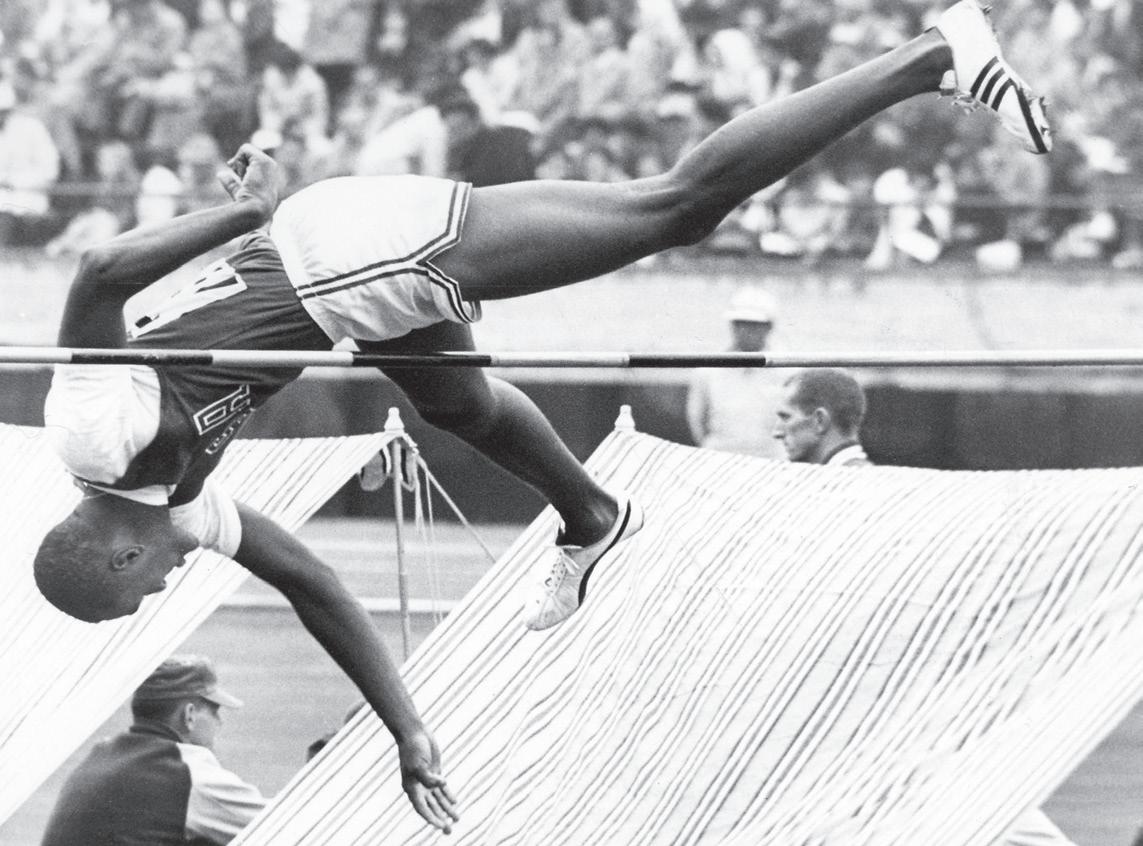
BASKETBALL (12)
Jim Barnes
Bill Bradley
Larry Brown
Joe Caldwell
Mel Counts
Dick Davies
Walt Hazzard
Luke Jackson
Pete McCaffrey
Jeff Mullins
Jerry Shipp
Jiff Wilson
BOXING (10)
Charlie Brown
Bob Carmody
Robert Christopherson
Charley Ellis
Joe Frazier
Maurice Frilot
Toby Gibson
Ronnie Harris
Louis Johnson
Jimmy Rosette
CANOE & KAYAK (11)
Joseph Dronzek
Francine Fox
Gert Grigoleit
William Jewell
Marcia Jones Smoke
James O’Rourke, Jr.
Glo Perrier
Tony Ralphs
Walter Richards
Bill Smoke
Dennis Van Valkenburgh
CYCLING (16)
Michael Allen
John Allis
Raymond Castilloux
Wes Chowen
Skip Cutting
Jack Disney
Alan Grieco
Michael Hiltner
Bill Kund
Oliver Martin
Tom Montemage
Tim Mountford
Donald Nelsen
Jackie Simes
Arnold Uhrlass
Hans Wolf
DIVING (12)
Larry Andreasen
Lesley Bush
Jeanne Collier
Linda Cooper
Tom Gompf
Frank Gorman
Sue Gossick
Ken Sitzberger
Barbara Talmage
Lou Vitucci
Bob Webster
Patsy Willard



Olympic Games Tokyo 1964, Rowing, Men’s Coxed Eight

Olympic Games Tokyo 1964, Rowing-Coxed Pairs gold
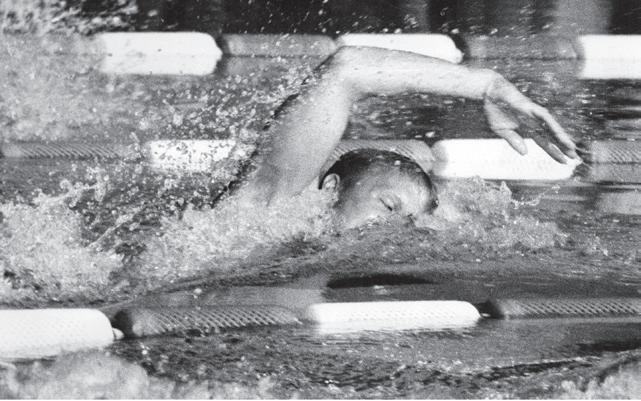
Olympic Games Tokyo 1964, Swimming gold – Don Schollander
EQUESTRIAN (10)
Frank Chapot
Lana du Pont
Kevin Freeman
Patricia Galvin de la Tour d’Auvergne
Kathy Kusner
Mary Mairs-Chapot
Karen McIntosh
Jessica Newberry-Ransehousen
Michael Page
J. Michael Plumb
FENCING (18)
Larry Anastasi
Tommy Angell
Frank Anger
Albie Axelrod
Robert Blum
Herb Cohen
Anne Drungis
Gene Glazer
Gene Hámori
Attila Keresztes
Harriet King
David Micahnik
Alfonso Morales
Denise O’Connor
Tom Orley
Paul Pesthy
Ed Richards
Jan York-Romary
GYMNASTICS (12)
Larry Banner
Ron Barak
Kathy Corrigan
Muriel Davis-Grossfeld
Dale McClements
Linda Metheny
Rusty Mitchell
Makoto Sakamoto
Art Shurlock
Janie Speaks
Sue Walther
Greg Weiss
JUDO (4)
Jim Bregman
Ben Campbell
George Harris
Paul Maruyama
MODERN PENTATHLON (2)
Dave Kirkwood
James Moore
ROWING (27)
Joe Amlong
Tom Amlong
Boyce Budd
Emory Clark
Sy Cromwell
Stan Cwiklinski
Philip Durbrow
James Edmonds
Ed Ferry
Conn Findlay
Hugh Foley
Paul Gunderson
Tony Johnson
Bill Knecht
Dick Lyon
Kent Mitchell
Ted Mittet
Ted Nash
Geoffrey Picard
Hughie Pollock
Thomas Pollock
Donald Spero
Jim Storm
Bill Stowe
James Tew
Edward Washburn
Róbert Zimonyi
ROWING (27)
Joe Amlong
Tom Amlong
Boyce Budd
Emory Clark
Sy Cromwell
Stan Cwiklinski
Philip Durbrow
James Edmonds
Ed Ferry
Conn Findlay
Hugh Foley
Paul Gunderson
Tony Johnson
Bill Knecht
Dick Lyon
Kent Mitchell
Ted Mittet
Ted Nash
Geoffrey Picard
Hughie Pollock
Thomas Pollock
Donald Spero
Jim Storm
Bill Stowe
James Tew
Edward Washburn
Róbert Zimonyi
SAILING (11)
Peter Barrett
Joe Batchelder
Bill Bentsen
Dick Deaver
Don McNamara
Buddy Melges, Jr.
Lowell North
Charlie Rogers
Frank Scully
Dick Stearns
Lynn Williams
SHOOTING (10)
Gary Anderson
Frank Green
Martin Gunnarsson
Frank Little
Bill McMillan
Bill Morris
Tommy Pool
Thomas Smith
Edwin Teague
Lones Wigger
SWIMMING (48)
Lynne Allsup
Wayne Anderson
Mike Austin
Bob Bennett
Erika Bricker
Steve Clark
Bill Craig
Donna de Varona
Gary Dilley
Ginny Duenkel
Kathy Ellis
Bill Farley
Cathy Ferguson
Sharon Finneran
Cynthia Goyette
Jed Graef
Jeanne Hallock
Nina Harmar
Tammy Hazleton
Gary Ilman
Chet Jastremski
Claudia Kolb
Virg Luken
Dave Lyons
Thompson Mann
Richard McGeagh
Bill Mettler
John Nelson
Sandra Nitta
Sue Pitt
Marilyn Ramenofsky
Martha Randall
Judy Reeder
Walter Richardson
Phil Riker
Carl Robie
Dick Roth
Roy Saari
Fred Schmidt
Don Schollander
Lary Schulhof
Patience Sherman
Terri Lee Stickles
Sharon Stouder
Ed Townsend
Tom Trethewey
Michael Wall
Pokey Watson
VOLLEYBALL (24)
Patti Bright
Mike Bright
Barry Brown
Keith Erickson
Jean Gaertner
Lou Galloway
William Griebenow
Dick Hammer
Barbara Harwerth
Jacob Highland
Ron Lang
Linda Murphy
Charles Nelson
Michael O’Hara
Gail O’Rourke
Nancy Owen
Mary Jo Peppler
Mary Perry
Sharon Peterson
Ernie Suwara
John Taylor
Verneda Thomas
Pete Velasco, Jr.
Jane Ward
WATER POLO (10)
Dave Ashleigh
Stan Cole
Ronald Crawford
Daniel Drown
Charles McIlroy
Chick McIlroy
Robert Saari
George Stransky
Tony Van Dorp
Ralph Whitney
WEIGHTLIFTING (7)
Ike Berger
Gary Cleveland
Tony Garcy
Gary Gubner
William March
Louis Riecke
Norb Schemansky
WRESTLING (16)
Dave Auble
Wayne Baughman
Dan Brand
Jim Burke
Russell Camilleri
Gerald Conine
Bobby Douglas
Ron Finley
Andrew Fitch
Larry Kristoff
Pat Lovell
Bob Pickens
Gregory Ruth
Gray Simons
Charles Tribble
Dick Wilson
His Imperial Highness Prince Akihito and Princess Michiko oversaw the Tokyo 1964 Paralympics which drew together 378 Para athletes from 21 countries. In total there were 144 medal events across nine sports.
Wheelchair racing, in the form of a 60m race for men and women, was added to the competition schedule in 1964, which included a total of nine different sports. The nine sports featured at the Games were; archery, Para athletics, dartchery, snooker, Para swimming, table tennis, weightlifting, wheelchair basketball and wheelchair fencing.
USA dominated the medal standings, taking home a total of 123 medals – 50
of them gold. Great Britain finished in second, followed by Italy, Australia, and Rhodesia.
Zimbabwe’s Margaret Harriman (archery), France’s Serge Bec (fencing) and Great Britain’s Dick Thompson, USA’s Ron Stein and South Africa’s Daniel Erasmus (athletics) highlighted the Games with their stellar performances.
The local and national press, both radio and television, responded with intense coverage after the Organizing Committee’s earlier worries that it might be difficult to create media interest because of the focus on the Olympic Games.
A capacity crowd of 5,000 cheered on the competitors at the Closing Ceremony on 12 November in the National Gymnasium. In attendance were the Crown Prince and Princess, Sir Ludwig Guttmann, the representative of the Prime Minister of Japan, the Minister of Health, and the Governor of Tokyo.
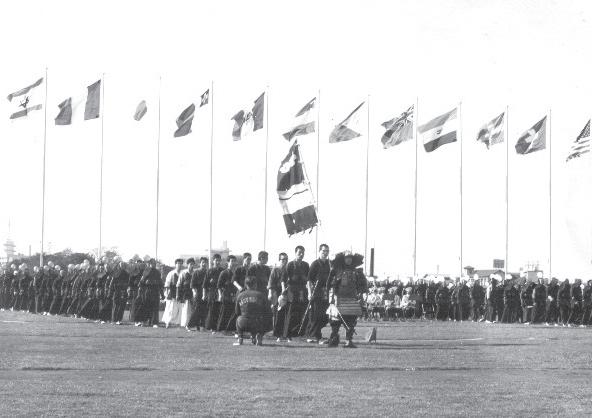
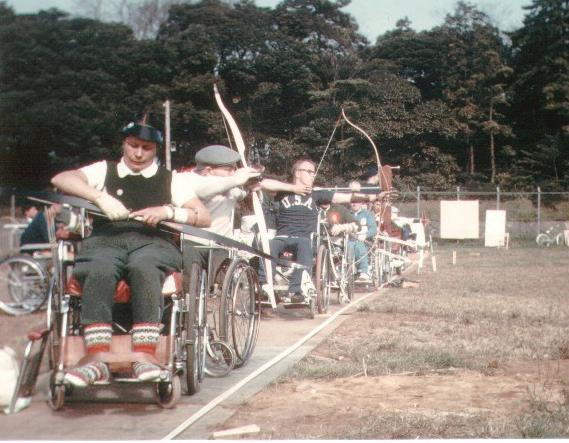
PARA ARCHERY (14)
Ethel Bedford
Robert Hawkes
Norma Hipwell
Jean Howe
Dan Kotter
Jim Mathis
George Pasipanki
Irene Preslipski
Richard Robinson
Roberta Rosenzweig
Dean Slaugh
Bonnie Stants
George Veenstra
Jack Whitman
PARA ATHLETICS (21)
Frances Barressi
George Conn
William Fairbanks
Carol Giesse
Timothy Harris
Rosalie Hixson
William Johnson
Don Kennedy
Peter Krajewski
Marvin Lapicola
Richard Maduro
Richard Miller
Lola Patterson
Alberta Richetelle
Charles Sandlass
Sandi Simmons
Hubert Smith
Ronald Stein
Frank Vecera Jr.
Judith Waterman
Christa Welger

PARA SWIMMING (15)
Howard Burkett
Marguerite Chafee
Ella Cox
Vincent Falardeau
Stefan Floresco
Samuel Goldstein
Janet Little
Evelyn Mulry
Edward Owen
J. Pasipanki
Phil Ramsey
Richard Rosenbaum
June Slade
Gary Schoep
Vincent Ward
PARA TABLE TENNIS (3)
E. Little
Phil Mastbergen
E. Mulry
WHEELCHAIR BASKETBALL (9)
Selig Boshnak
Bruce Karr
Fritz Krauth
William Simmons
Charles Smith
Dick Thomas
Lennie Tubb
Saul Welger
Alonzo Wilkins

www.uscenterforsafesport.org
www.uscenterforsafesport.org
Report a Concern
(720) 531-0340
uscenterforsafesport.org/report-a-concern
24/7 Helpline:
(720) 531-0340
1 (866) 200-0796
uscenterforsafesport.org/report-a-concern
Centralized Disciplinary Database
24/7 Helpline:
1 (866) 200-0796
Federal Title IX regulations were recently updated on August 14, 2020. Learn about these new regulations and how they differ from the SafeSport Code. Watch our video overview, read through our helpful FAQs, and listen to our latest podcast episode. Stay aware on how these changes affect you, your athletes, and your organization!
www.uscenterforsafesport.org/#titleix
Check Out the Center’s Podcasts!
Federal Title IX regulations updated on August 14, new regulations and SafeSport Code. Watch read through our helpful latest podcast episode. these changes affect your organization!
Centralized Disciplinary Database
Do you know about the U.S. Center for SafeSport’s Centralized Disciplinary Database?
Do you know about the U.S. Center for SafeSport’s Centralized Disciplinary Database? This resource is designed to keep the public informed when individuals connected with the U.S. Olympic & Paralympic Movements are either subject to certain temporary restrictions pending investigation by the Center or are subject to certain sanctions after an investigation found them in violation of the SafeSport Code. Learn more at https://uscenterforsafesport.org/response-andresolution/disciplinary-database/
Everyone has a role to play in keeping athletes safe in sports programs. Listen to podcasts geared towards youth protection for tips on distinguishing discipline from abuse, discussions on age-appropriate sport experiences, and more. Listen and explore topics now at www.uscenterforsafesport.org/podcasts
This resource is designed to keep the public informed when individuals connected with the U.S. Olympic & Paralympic Movements are either subject to certain temporary restrictions pending investigation by the Center or are subject to certain sanctions after an investigation found them in violation of the SafeSport Code. Learn more at
www.uscenterforsafesport.org/#titleix
Check Out the Center’s
Everyone has a role safe in sports program geared towards youth distinguishing discipline on age-appropriate sport more. Listen and explore
www.uscenterforsafesport.org/podcasts
In just a short amount of time, the U.S. Olympic & Paralympic Museum has established itself as a top-of-the-line destination for a variety of guests and events, with engaging content planned for the spring and summer heading into the Tokyo Games.
Member Monday, a regular monthly staple for many members, providing an up close and personal look at several Olympians, Paralympians and others in the movements. In February, in conjunction with Black History Month, Vonetta Flowers and Chris Coleman joined guests in the Chapman Special Events Space to talk about their journeys from aspiring track athletes to Olympic bobsledders.
Three days later, seven members of the Toyota U.S. Paratriathlon Resident Team visited the Museum for a media day.
March features include Girl Scouts Week and Homeschoolers Day as the Museum helps children learn about the history of the Games, science and technology and inspires them with the stories of the greatest Team USA athletes of all time.
Previously, the Museum hosted Military Appreciation Weekend, Valentine’s Weekend, Library Weekend, First Responders Weekend, Veterans Week, Halloween at the Boo!seum, Teacher Appreciation Weekend and Youth Sports Week. The Museum closed 2020 with bang, with the New Year’s Eve announcement that it was named the nation’s Best New Attraction of 2020 by USA Today.
This past fall, the Museum also hosted Judo Demonstration Day as Olympic judoka performed on mats in the Museum’s atrium.
All U.S. Olympians and Paralympians receive complimentary individual lifetime membership to the Museum. In half a year of operation, more than 100 athletes have visited. From the moment they take the elevator ride to the top of the Museum, all along the descending ramp through the stories of the U.S. Olympic and Paralympic movements and to the final film that concludes the Museum visit, athletes enjoy the memories evoked throughout the exhibits.
“What a super place. It evokes so many good memories,” said Jim Page, who competed in Nordic combined at the Innsbruck 1964 Olympic Winter Games. “One of the great things about Olympic participation is the very positive aspects of everything involved.
“We loved the staff. So welcoming and engaging. They are so well trained and so proud of what they are doing! We also really liked the interactive exhibits. Wish there were more!! And we reacted well to the energy and professionalism of the museum. As you know there is nothing like live Olympic competition. We all felt the Olympic vibe throughout the building. We will be back again. Thanks for saying it is our houseOlympians. It took me back to so many good times in my life and I appreciate it greatly!”
Paralympic alpine skier Dan Kosick, who competed at the Nagano 1998
Paralympic Winter Games and the Salt Lake City 2002 Paralympic Winter Games, also enjoyed his visit.
“I was thoroughly impressed with the Museum,” Kosick said. “I felt honored to be there and seeing the equal representation of both Paralympic and Olympic displays. I sure hope to bring my family out there some day.”
The Museum welcomes athletes’ suggestions and input and there are several ways for athletes to get involved with the Museum:
• Visit the Museum: Contact athletes@usopm.org to schedule your visit.
• Donate or loan items to the Museum: fill out the online application at https://usopm.org/ artifact-donation or email curator@ usopm.org
• Make a financial contribution to the Museum: Visit https:// usopm.org/donate/ or contact Cari Karns at ckarns@usopm.org for more information.
• Participate in the Museum’s oral history projects. See our oral history collection at https:// usopm.org/oral-history/ or contact athletes@usopm.org if you would like to participate.
• Follow the Museum on social media: On Twitter and Instagram @usopmuseum and Facebook
@USOPMuseum. We appreciate all engagement.





1960 Olympian Peter Bos has created an illustrated book for young children in concert with two wellknown writers and an acclaimed illustrator. After the Race is a book based on the true story of Olympic rowers Peter Bos and Kraft Schepke. The book follows the lives of the two oarsmen—one American and one German—from their very different WWII era childhoods…to their race in the 1960 Rome Olympics…to their post-Olympic everyday lives. The story takes on renewed importance when Peter and Kraft re-connect after more than 50 years and, with two other international rowers, win the 2018 World Masters Rowing championship as octogenarians. In the arc of their lives Peter and Kraft went from children in a world at war to worldclass competitors to great friends to cherished teammates. In the final scene, as they raced to victory, they rowed not for any one nationality, but for their generation worldwide, offering a message of peace for children today and for generations to come.
After the Race – Reactions from a range of pre-publication readers
“An amazing, beautifully illustrated story that covers all the life lessons and the TRUE meaning of the Olympic movement. It should be required reading before anyone who competes in a sport.” —Mike Teti, U.S. National Men’s Rowing Coach (currently training the U.S. eight for the Tokyo Olympics)
“A simple and wonderful story about the power of the human spirit. The tale of the unlikely friendship
between Peter and Kraft, rekindled 60 years after a simple act of charity, reminds us that genuine personal connections can triumph over all... over Olympic competition...even over war.” —Admiral (Retired) John Richardson, USN, former Chief of Naval Operations
“After The Race’ is a wonderful tale that ties the dark past to the present and in the telling gives some hope to the human condition. Adults as well as children will love it.”
Professor Williamson (Wick) Murray, noted military historian and author
of “America and the Future of War” among many others.
“A beautifully illustrated story that captures not only the spirit of the Olympic Games but the broader meaning of sport.” — Mary Mazzio, Olympic rower and noted social documentary creator and producer of such works as recently released widely acclaimed “A Most Beautiful Thing,” as well as “I Am Jane Doe” and “Underwater Dreams” among many others.
“A wonderfully illustrated picture
book…a poignant and timely tale of hope.. a reminder to our human race of what really matters.” —Matthew Rhys, star of “A Beautiful Day in the Neighborhood” and the hit TV series “The Americans” and “Perry Mason.”
“This beautifully told and illustrated true story shows how an emotionally courageous gesture can break through enmity and bring us together on the bows of our common humanity. The book teaches the lesson in a way accessible to children and would provide the basis for more wide-ranging history and civics projects.”
—Elizabeth Allen, a distinguished educator who has taught in England, the USA, Italy Poland and Hungary
“The five interlocking Olympic rings are meant to symbolize the sporting friendship of the peoples of the earth, whatever their creed or country. No story could show this more to the youngsters of today than that of Peter and Kraft. Nice to know that Olympians are still ‘carrying the torch.’” —Bill Becklean, coxswain of the 1956 gold medal winning US Olympic eight
“I loved it! I really liked how you showed the similarities between
Peter and Kraft, and how they began to question the war. It really showed how everyone is human, and that nothing is black and white. I feel like children reading this would be made to question their petty rivalries, and maybe even their world view. The illustrations and writing are so beautiful and wholesome.” Charlotte Almond, Student, Age 12, New York
OORF - 501c3
Learn more at: www.oorf.org
This past year, with the pandemic and Olympic Games’ postponement, has been difficult for many Olympians and Paralympians. Throughout it all, the OORF has remained steadfast in our promise to help our Olympic and Paralympic brothers and sisters to tackle the challenges of accidents, illness or injuries. We have welcomed a Paralympian to the OORF Board, and we are updating our bylaws to be more forward thinking and proactive as well. If you wish to provide some support for an Olympic or Paralympic alumni in their time of dire need, please consider making a gift, today..
Naber & Associates, Inc.
Post Office Box 50107 Pasadena, CA 91115
626.795.7675
John@JohnNaber.com
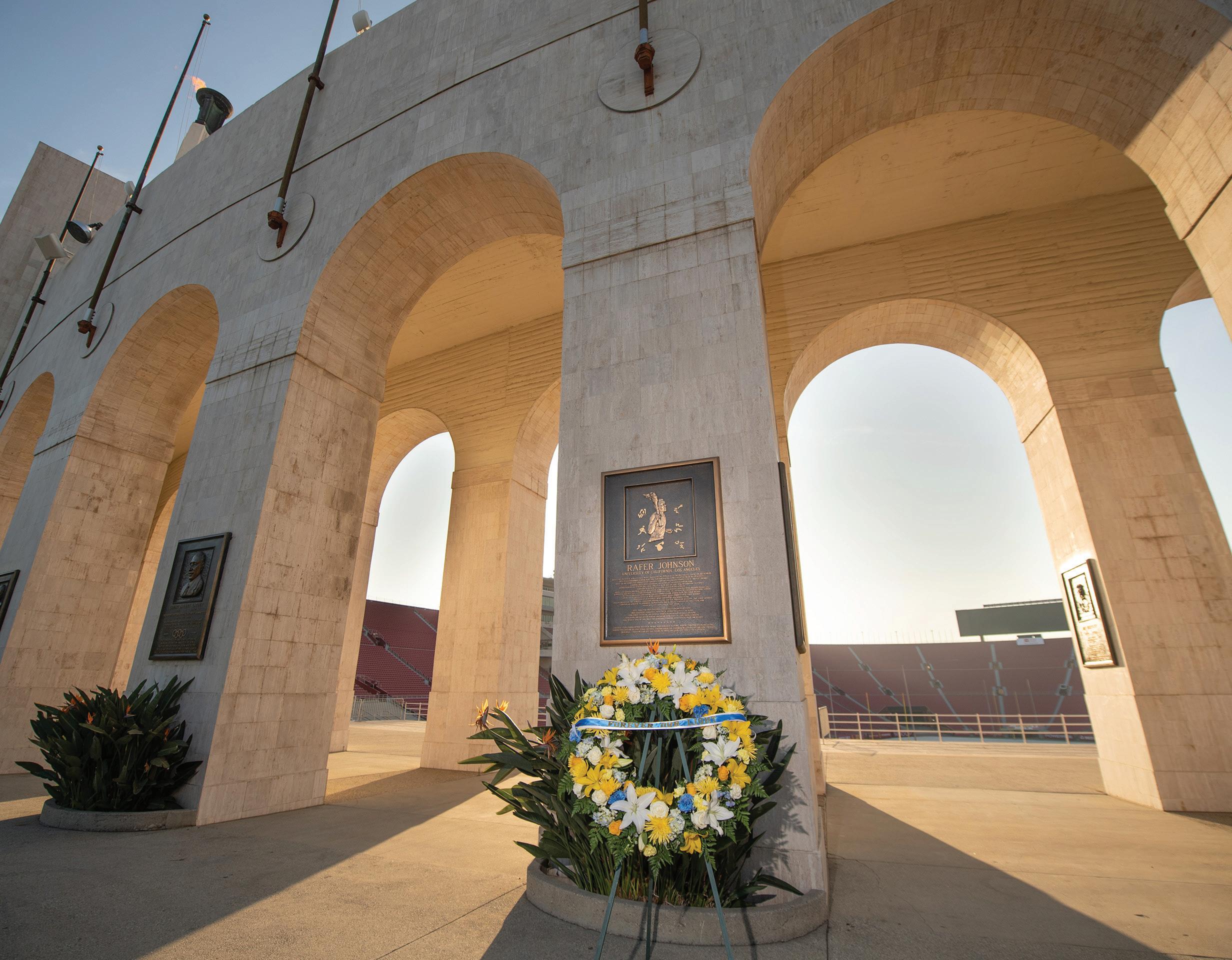
The LA84 Foundation mourned the passing of Rafer Johnson in December. Johnson, 86, was a two-time Olympian, served on the executive committee of the Los Angeles Olympic Organizing Committee and was chosen to ignite the Olympic flame at the Los Angeles Coliseum during the 1984 Olympic Games opening ceremonies.
Among his lifetime of legendary accomplishments, Johnson was a twotime Olympian, Olympic gold medalist in the decathlon, a founding board
member of the LA84 Foundation, cofounder of the Special Olympics in Southern California and civil rights icon. “Our sense of loss is only eclipsed by the gratitude we will always feel for the opportunity to work so closely with Rafer. He embodied the Olympic Movement,” said Peter Ueberroth, CEO of the 1984 Summer Olympics and longtime board member of the LA84 Foundation. “There are so many lives he touched and improved as a true hero who cared deeply for others. Each day we are focused on honoring his legacy.”
The LA84 Foundation placed this wreath near Rafer Johnson’s plaque at the Los Angeles Memorial Coliseum following Johnson’s passing in December. Johnson was a founding board member of the LA84 Foundation, and he lit the torch for the 1984 Summer Olympics in Los Angeles.
Since 2019, the “Rafer Johnson. His Life. His Impact” exhibit has been displayed at the LA84 Foundation Sports Library, featuring memorabilia, rare artifacts and personal photos from Johnson’s remarkable career. His guidance helped shepherd the LA84 Foundation into awarding grants and developing programs that have impacted more than 3.5 million youth in Southern California.

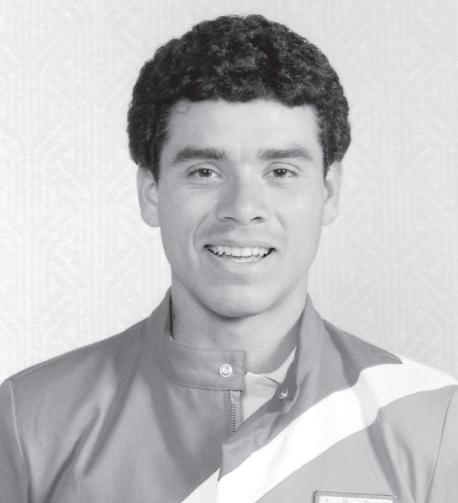
Flavio “Flav” Alfaro (baseball, 1984)
Flavio “Flav” Alfaro died on Jan. 27, 2021, at the age of 59.
Flav attacked life with uncompromising zeal, humor, and generosity. For Flav, each day was a celebration to be enjoyed with his wife, family and numerous friends from across his life’s journey.
That journey began in the Pacoima area of Los Angeles, California, where his baseball speed and glove skills began to emerge at Polytechnic High School. After service in the United States Marine Corps, he returned to playing baseball at College of the Canyons and then for San Diego State University Aztecs.
He was then given the honor of a lifetime when he was selected as a member of the United States’ first Olympic baseball team in 1984. Flav played middle infield and travelled the country with many future Major League Baseball All Stars. The team played in the Olympic Games demonstration baseball tournament at the 1984 Olympic Games in Flav’s hometown of Los Angeles, earning a silver medal.
Flav was the 99th overall pick in the 1984 Major League Baseball First-Year Draft and played for several minor league teams, including the Durham Bulls. He was extremely humble about
his baseball career, joking that it was over “once they put a wooden bat in my hand”. When asked about his time playing baseball, he preferred to tell stories of the fun he had, the friends he made and the lessons he learned -- never about any personal achievements.
After his baseball career, Flav worked in the recycling business and moved to Sacramento, where he met the love of his life, Suzanne. “Suz” would be at his side for nearly 30 years. Along the way, Flav recommitted to earning his college degree and received a Bachelor of Science in business information management systems from California State University Sacramento.
Flav’s passion was spending time with friends and family. The home he and Suz made was full of warmth, laughter, great food and wine. Their door was always open. He loved exercise, movies, music, books and sports. He loved to travel with his wife to wine country. He loved playing golf, poker and fantasy sports with his friends.
Flav was an accomplished storyteller. During countless leisurely times with friends and family, his tales, and long list of Flav-isms to describe everyday life, would leave anyone crying in laughter. He enriched many young lives who all knew him for his “power hugs.” He cherished the title of “uncle” and “tio.” And he had a deep love for animals. He spent much of his time caring for his cats and dog, Lily “The Hammer”.
Most recently, Flav managed Harrison’s California Chestnut Farm in Gridley, owned by his mother-in-law Sandy and late father-in-law Paul Harrison. There too, Flav, Suz, Sandy, his sister-in-law Anastasia and brother-in-law Kevin ensured the farm was a place for family
and friends to enjoy cookouts, and for children to hunt for Easter eggs, ride on tractors and drive golf carts.
Flav was a larger-than-life figure, and his enormous positive and joyful presence will live on in spirit. His life will serve as an inspiration to his extended family and to young scholar athletes.
Flavio is survived by his beloved wife Suzanne (Harrison) Alfaro of Sacramento; parents Luis and Teresa; brothers Manuel, Jaime and Ramon, and sister Irma Roman of Pacoima; mother-in-law Sandy Harrison of Gridley, sister-in-law Anastasia (Harrison) Murphy and her husband Kevin of Elk Grove; nephews Marcus, Manuel, Oscar and Michael; and nieces Shaney, Marissa, Selina, Shealyn, Maggie and many grand nieces and nephews, uncles, aunts and cousins. He is preceded in death by his fatherin-law Paul Harrison; two dogs Chewy and Cleo.

David “Davey” Armstrong ( boxing, 1972, 1976)
David “Davey” Armstrong died on Feb. 8, 2021, at the age of 64.
Davey started boxing at the age of 10 at the Tacoma Boys Club where he developed into a national amateur powerhouse. He represented the United States at the Olympic Games Munich 1972 and the Olympic Games Montreal 1976.

At the Montreal Games, Davey was outpointed in the quarterfinals by Cuba’s eventual two-time gold medalist Angel Herrera. The verdict was split with two of the five judges favoring Davey and was widely considered a robbery.
Between the Olympic Games, Davey was badly hurt in an auto accident. In March 1974, a van in which he was a passenger rolled over a snowy Northern California highway; he suffered thirddegree burns on both feet.
Davey turned pro in Detroit under the tutelage of Emanuel Steward. As a pro, Dave was 24-3. He retired after he lost a 10-round decision on Oct. 10, 1982.
In retirement, Davey took courses in accounting and had a series of desk jobs for the city of Seattle.
He will be remembered for his relentless competitive drive and craftiness in the ring by his peers and former coaches.

William “Bill” Bentsen died on Dec. 25, 2020, at the age of 90.
Bill was born in Chicago, was educated in public schools and entered the University of Chicago College at age 16 under a program that enrolled qualified students after two years of high school. He later transferred to Denison University, earning a bachelor’s degree. He went on to earn a master’s degree
in economics at the University of Minnesota, and after service in the U.S. Marine Corps, a doctorate in economics from the University of Wisconsin. He joined the faculty of Beloit College in Wisconsin as an assistant professor of economics and business, was associate dean of the college, and later worked for the Associated Colleges of the Midwest, the United States Yacht Racing Union (now U.S. Sailing), and the Art Institute of Chicago.
As crew for his teammate Buddy Melges, Bill won a bronze medal at the Olympic Games Tokyo 1964, a gold medal at the Pan American Games Winnipeg 1967 in Canada, and, with third crew Bill Allen, a gold medal at the Olympic Games Munich 1972.
In 1966, Bill finished first in Yachting magazine’s One-of-a-Kind Regatta, sailing a 38-foot Class A scow. He also raced iceboats, initially competing in the 12-foot DN Class and then in a 42foot Class A stern-steerer. He was a member of the Skeeter Ice Boat Club.
Bill became keenly interested in the racing rules as a college student when he fouled out of a race at the Chicago Yacht Club and the protest committee chairman took the time to explain, word by word, the intricacies of the rule he had broken. The incident inspired him to study the racing rules with great care, and in the decades that followed, he became a major contributor to their interpretation, revision, and simplification.
At the national and international level, Bill was a member from 1972 to 2008 (chair, 1979-1988) of the U.S. Sailing Association Racing Rules Committee, a member from 1984 to 2015 (chair, 19982002) of its Appeals Committee, and a member from 1979 to 2004 of the Racing Rules Committee of the International
Sailing Federation now known as World Sailing, the international authority of the sport, based in England. He also served as a national judge for the Royal Yachting Association from 1995 to 1999 when he lived in England. Over the years, he served as a jury member at world and continental sailing championships, the 1979 Pan American Games, and the 1988 Olympic Regatta.
Bill was a member of the Lake Geneva Yacht Club Race Committee for various years from 1962, he was Chief Judge and a Senior Race Officer, and chaired the club’s 2009 Bylaws Review Committee. Within the Inland Lake Yachting Association, he was a member of the Racing Rules Committee in the 1960s and 1970s and later a Senior Race Officer.
Bill was the author of The Yacht Racing Rules Today (Dodd, Mead, 1974) and numerous articles for American, British, and Australian periodicals about boat speed and tactics, course design, scoring, and the racing rules. From 1963 to 1969, he was a contributing editor to One-Design and Offshore Yachtsman magazine.
In 1994, Bill received the Nathanael G. Herreshoff Trophy from U.S. Sailing in recognition of his outstanding contributions to the sport. In 2008, he received that organization’s Harmon Hawkins Trophy for his work in the field of race administration. In 1972, he was named to the Inter-Collegiate Yacht Racing Association College Sailing Hall of Fame; in 2008, to the Inland Lake Yachting Association Hall of Fame; and in 2017, to the National Sailing Hall of Fame. In 2007, U.S. Sailing’s Judges Committee named him Judge Emeritus in recognition of his distinguished service as a competitor and sailing official. In 2009 and 2016, he was the recipient of Lake Geneva
Yacht Club’s Marie Kramp Award for Outstanding Service. In 2009, he was honored to receive World Sailing’s Beppe Croce Trophy from the president of the organization, Goran Petersson of Sweden. The award recognizes outstanding voluntary contributions to the sport.
Bill was preceded in death by his parents, Holger and Elden Bentsen, and his sister, Beverly Spear. He is survived by his wife, Ellen, and two nieces.
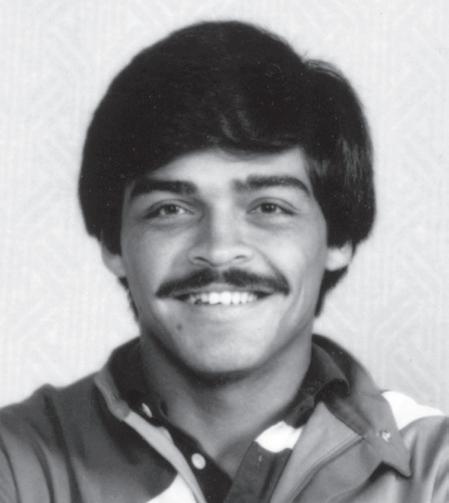
Hernan “Chico” Borja died on Jan. 28, 2021, at the age of 61.
Chico starred for the Wichita Wings, Kansas’ first major league sports team from 1985 to 1987 and 1988 to 1994. He was the all-time leader in assists and fourth in goals scored. He led the Major Indoor Soccer League (MISL) in assists during the 1988-89 season.
With 30 career game-winning goals, second-most in team history, Chico grew to become one of the most popular players on the team. Known as the “American Dream,” his winning smile won over the members of the Orange Army, the Wings’ fan club.
Born in Quito, Ecuador, Chico immigrated to New Jersey with his family at the age of 12. He rose to prominence as a soccer player at the New Jersey Institute of Technology,
where he became an NCAA first-team All-American.
Chico went on to play for the New York Cosmos in the North American Soccer League. Chico was selected to compete at the Olympic Games Los Angeles 1984 and played in all three of the team’s games. Chico’s skill with the ball, both as a scorer and a passer, was legendary, and his competitive spirit was fierce. He demanded the best from his teammates.
After retirement as a professional athlete, Chico was involved in coaching soccer at numerous levels, including a stint with the Kansas City Wizards, now known as Sporting KC. He then became a school administrator and eventually settled in Florida, where he lived until his death.
Chico’s daughter Brianna Borja, 26, said though he is gone physically, his spirit lives on in everyone who knows him. “I will carry his love within my heart everywhere I go. He taught me how to love through his selfless acts, creating such a beautiful life for our family. Everything he did was for us and it is my purpose to continue that legacy of love,” Brianna said.


Edward “Eddie” Borysewicz died on Nov. 17, 2020, at the age of 81.
Eddie was a famed cycling coach and
mentor to riders like Greg LeMond, Andy Hampsten and Lance Armstrong.
Eddie was a talented cyclist in Poland’s junior ranks after World War II, winning the national title twice before entering compulsory military service. When he returned, he made the shortlist to compete in the Peace Race with the national team, but pre-selection physical examinations led to a false diagnosis of tuberculosis. Intensive treatments for a disease he did not even have led to permanent physical damage that ended his career.
He instead turned to coaching and became a national team coach in his native Poland before a chance meeting ahead of the Olympic Games Montreal 1976 led him to move overseas to lead the U.S. national cycling team. He scoured the results for talented juniors and invited them to train with him - one of those riders was LeMond. Eddie invited LeMond to Poland and helped organize a European racing campaign for him.
Eddie led the national team at the 1978 junior world championships in Washington, D.C., taking a ragtag team from the back of the peloton into the top 10 of the team time trial. By 1979, LeMond claimed the country’s first junior world title in Argentina.
Eddie graduated to coaching the elite programs for the U.S. federation. After the Olympic Games Moscow 1980, which were hit by the U.S. boycott of Russia, he led a successful foray for the U.S. delegation at the Olympic Games Los Angeles Games 1984.
The U.S. team enjoyed major success in Los Angeles, earning road race gold medals – Alexi Grewal in the men’s road race and Connie Carpenter in the women’s – along with silver from
Edward “Eddie” Borysewicz (cycling coach, 1980, 1984)
Rebecca Twigg. Steve Hegg won gold in the individual pursuit, and Mark Gorski and Nelson Vails finished one-two in the men’s sprint. The team earned silver in the team pursuit, with David Grylls, Hegg, Patrick McDonough, Leonard Nitz and Brent Emery, as well as bronze in the team time trial with Ron Kiefel, Roy Knickmann, Davis Phinney and Andy Weaver. Nitz also won bronze in the individual pursuit.
Eddie’s 1985 book, “Bicycle Road Racing: Complete Programme for Training and Competition,” set the standard as a training manual for a generation of cyclists, giving advice on bike fit, nutrition, training and periodization, and tactics.
Eddie eventually gave up coaching elite racers and instead focused on training aspiring master’s racers in San Diego, his main residence, although he maintained a home in Poland.
He gathered a loyal following in California, and when his home burned down in the 2003 Cedar Fire, his friends raised $120,000 to help him rebuild. LeMond presented Eddie with the Father of Modern American Cycling Award at the Endurance Sports Awards in San Diego after holding a fundraising cycling camp for Eddie.
Eddie is survived by his wife Sophie and children, Julia and Edward.
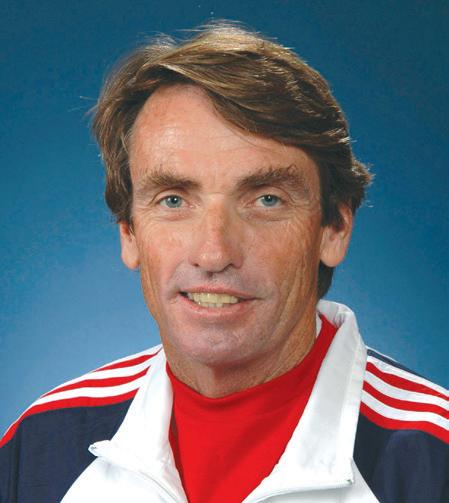
Kevin Burnham (sailing, 1992, 1996, 2004)
Kevin Burnham died on Nov. 27, 2020, at the age of 63.
A native of Queens, New York, Kevin made his Olympic debut in men’s 470 at the Olympic Games Barcelona 1992, winning a silver medal with Morgan Reeser. Kevin also competed in the Olympic Games Atlanta 1996, then broke through to his first gold medal at the Olympic Games Athens 2004. Kevin and Paul Foerster became the first American men to win gold in the men’s 470, and to date, the most recent to do so. Besides the Olympic Games, he also competed in prestigious races such as the Sydney-Hobart Race, the Newport to Bermuda Race and was an 11-time national champion.
Later in life, Kevin became a coach with U.S. Sailing. He focused primarily on coaching young sailors for both national and international competition. He is a nominee for induction into the National Sailing Hall of Fame’s 2021 class.
Kevin is survived by his wife Elizabeth, son Eddie, daughter Kyla, and his brother and father.

Danute “Bunki” BankaitisDavis (cycling, 1988)
Danute “Bunki” Bankaitis-Davis died on Jan. 29, 2021, at the age of 63.
Bunki was a standout in the Boulder region’s talent-rich cycling community. Her career highlights included being named to the U.S. Olympic Road Cycling Team in 1988 (Seoul, Korea) and 1992 (Barcelona Spain - 1st alternate), and winning gold medals in the team time trial at the 1992 world championships and 1992 national championships. She raced for the U.S. National Cycling Team, and top trade teams, including 7-Eleven, Centurion and Look.
Bunki earned multiple chemistry degrees, including B.S. and M.S. from Cleveland State University, and a Ph.D. in organic chemistry from the University of North Carolina.
Upon retiring from cycling, Bunki was a successful translational scientist, specializing in drug and diagnostic development. In 1998, she co-founded Source MDx®, a molecular diagnostics company, headquartered in Boulder.
Most recently, she served as vice president quality and laboratory operations for Scipher Medicine in Boston.
Bunki made a habit of tackling every

stage in life with spirit, determination, excellence, kindness and good humor. She remains well-loved by all who knew her and will be profoundly missed.
Bunki’s greatest joy was her family. She is survived by her husband Chip, son Armen, brothers Vytas, Raimundas, Jonas, Saulius and Audrius, and sisters Mirga, Sigute and Aukse. Bunki was the daughter of Lithuanian immigrants, Henrikas and Aldona Bankaitis, both deceased.
In her memory, please consider supporting The Bunki Bankaitis-Davis Memorial Scholarship at the University of North Carolina. To learn more and contribute, visit https://give.unc.edu/ gift/bdavis

Walter Francis “Buddy” Davis (track and field, 1952)
Walter Francis “Buddy” David died on Nov. 17, 2020, at the age of 89.
Buddy was born January 5, 1931, to Arthur J. and Therese (Meadows) Davis of Nederland, Texas. He was the youngest of four children, joining his sisters and brother, Mary Nan Hunnicutt, Averil J. “Sonny” Davis and Rose Arthur Knighten. He was preceded in death by his parents, his sister Mary Nan, and his beloved wife Margaret Tynan Davis.
He is survived by his brother Sonny and sister Rose Arthur, his seven daughters, Mary Edith (Bobby) Barnett,
Nancy Louise Arrellano, Colleen Marie Curtis, Hillary Ann (Jack) Feltman, Karen Frances West, Martha Christine (Robert) Cerny, and Barbara Esther Burleson, and two sons, Shaun Patrick (Tammy) and Paul Damian. In addition, he is survived by grandchildren, Denise, Frank, Ana, Heather, Mona, Carly, Abby, Hunter, Rachael, Katie, Luke, Kyle, Layne, Maddie, Conner, and Danny, and an ever-increasing number of great- and great-great-grandchildren who filled his life with the semi-organized chaos and laughter he craved.
To quote a line from The Man Who Shot Liberty Valance, “When legend becomes fact, print the legend.” The fact is that our dad was, by any measure, a sports legend. Buddy lived an early life chronicled by newsreels, national TV commercials (Kent Cigarettes), variety television shows (Ed Sullivan), and major domestic and international newspapers and magazines.
Overcoming a three-year bout of polio as a boy, he was a pure and natural athletic phenom. Standing 6’ 9” tall with cat-like reflexes, and a vertical leap that rivals any in history, he was a multi-sport mega-talent. Playing every sport available to him at Nederland High School, his rare physical dimensions combined with his graceful and coordinated movements made him a coveted college “blue chip” recruit in 1948. His final decision to attend college came down to a choice between the Fighting Irish of Notre Dame and the Aggies of Texas A&M College. His mother Therese made the decision simple when she declared that the military discipline of Aggieland was what the rakish, young Walt needed.
As freshmen were not allowed to participate in NCAA sports at the time, Buddy used his time to get stronger and settle into college life. He married
Margaret during his sophomore year in November of 1950. By his junior year, he was a recognized national force in basketball for the Aggies. But Buddy still loved all sports. As fate would have it, while pitching batting practice to the Aggie baseball team, the baseball coach chased Buddy from the mound telling him, “we have plenty of pitchers kid but only one basketball center.” On his way back to the gym, he walked by the track field where some guys were high jumping. Never shy or lacking confidence, Buddy challenged the jumpers and said, “I can jump that.” And he promptly cleared the bar with ease. The track coach witnessed this feat and promptly signed him up to compete in the Southwest Conference Championship track meet the coming weekend. Buddy finished second. Thus, began his two-sport odyssey at A&M.
Buddy went on to have a storied athletic career at Texas A&M, becoming one of only two athletes in A&M history to collect All-American honors in two sports (basketball and track). Following his senior year, he was drafted to play professional basketball by the Philadelphia Warriors of the NBA. However, having just won the U.S. Olympic Trials in the high jump, he declined the offer and chose to participate in the Olympic Games Helsinki 1952. At the time, only amateurs could participate in the Olympic Games (a status he would have lost by signing a pro contract). He went on to win the first gold medal for the U.S. by setting a new Olympic high jump record of 6’8 1/4”. Later that same year, he went on to set the new world record for the high jump at 6’10 3/4”. He also became the first person to clear a bar set at 7’.
With his impressive size, extraordinary athleticism, and world class leaping ability, the Philadelphia Warriors

once again drafted him to play in the NBA. This time the “Kid Kangaroo” accepted the offer, going on to win an NBA Championship with the Warriors in 1956. After being traded to the St. Louis Hawks the following year, he won another NBA Championship with the Hawks in 1958. Buddy wrapped up his playing days in 1959. After being traded to the Boston Celtics for the 1960 season, he opted not to report, ending his legendary career in sports. To this day, he is the only athlete in the history to have both an NBA Championship ring and an Olympic gold medal in track and field.
Buddy’s storied accomplishments have been recognized by his induction into the Texas Sports Hall of Fame, the Texas A&M Sports Hall of Fame, the Texas Track and Field Hall of Fame, the Texas High School Basketball Hall of Fame, and the Museum of the Gulf Coast Hall of Fame.
Following his professional playing days, Buddy came home to southeast Texas to begin a long and satisfying career in banking. Always loud, confident, and impossible to ignore, his thunderous laugh and weaponized wit were kept sharp by a voracious appetite for literature and human interaction.
We will miss him for the rest of our days, but we count ourselves fortunate to have called him dad, granddaddy, uncle, brother, and friend. Each time there is a campfire, a bent fishing rod, or a good glass of whiskey, we will think of you and raise that glass.

Clement G. “Clem” Eischen (track and field, 1948)
Clement “Clem” Eischen died on Dec. 24, 2020, at the age of 93.
Clem was born in Adams County, Nebraska and attended a one-room schoolhouse until his family moved to Vancouver, Washington, in 1943. As a young boy, he developed a passion for fishing that lasted a lifetime. Clem graduated from Fort Vancouver High School, where he was inducted into the Hall of Fame, and later Washington State University. He was an All American in track and competed in the Olympic Games London 1948. He taught biology at Shumway Jr High School and at Hudson’s Bay High School. One of his fondest memories was coaching his track athletes to the state championship in 1961.
Nancy Lee Coleman won Clem’s heart during a feisty date to Lake Washington, and they wed in 1959. After teaching and coaching nine years, and with family in tow, Clem went back to graduate school at Stanford University and earned his physical therapy degree. He established Lloyd Center Physical Therapy, SportsCare Physical Therapy, and served on the sports medicine staff at the Olympic Games Atlanta 1996.
Clem was very active in his profession, won many awards, and was instrumental passing legislation in 1967 allowing
reimbursement for services done by outpatient physical therapists.
Clem was upbeat, optimistic and he always had something nice to say about everybody. He was a terrific husband, father, grandfather, and he will be missed dearly.
Clem was preceded in death by his parents, Peter and Marie Miller Eischen; brother, Virgil, and sister, Valeta Marie Eischen. He is survived by his wife, Nancy; sons, George and Chris; and daughter, Snowy Eischen, and their families.
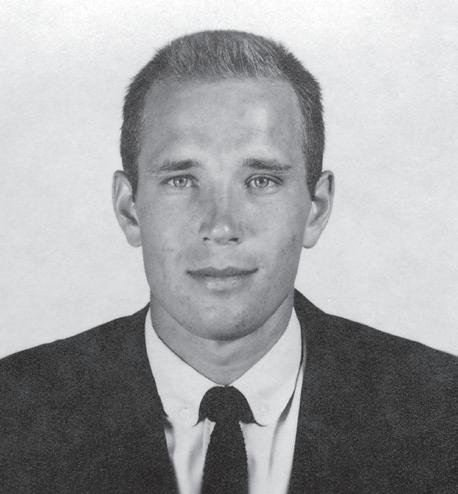
William “Bill” Best Evans (basketball, 1956)
William “Bill” Best died on Nov. 22, 2020, at the age of 88.
Bill was born Berea, Kentucky. He was recruited to play basketball for the University of Kentucky Wildcats, and his #42 jersey is retired in the rafters of Rupp Arena. Bill was a multi-sport athlete at UK. He also played baseball and #1 singles in tennis, lettering in all three sports. After graduating, he played basketball for the Armed Forces, which led him to be invited to play on the U.S. Olympic Basketball Team that won gold at the Olympic Games Melbourne 1956. In 1959, he played in the Pan American Games for the U.S. team that won gold in Chicago. Bill was always humble when asked about his achievements.
Bill had a long successful career as vice president of franchising for Kentucky Fried Chicken in Louisville. He enjoyed his job and traveling around the country meeting with KFC franchisees. When Bill was not working, his favorite place to be was on the tennis court.
He was known as a great competitor and a gentleman on the court. He played singles and doubles in state, sectional and national level tournaments. He was a tennis enthusiast who made it a priority to grow the sport in Kentucky. Whether it was for fun or for a trophy, he usually found a way to win.
Bill is survived by his loving wife of 27 years, Nancy. He is also survived by his sister Rose Mary, brother Carl (Ann), children Sallie and Allison (Tom), and grandchildren Lynn, Hannah and Sam Coryell, Evan and Tommy Scanlan, and extended family.
Bill chose to bequeath his body to the University of Kentucky Medical Center.
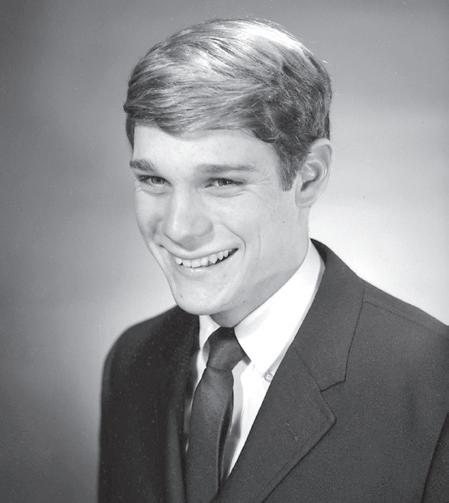

John Ferris died on Sept. 13, 2020, at the age of 71.
John entered college as the worldrecord holder in the 200-meter butterfly, set at the World University Games in Tokyo a few weeks before – a record that lasted until his childhood rival Mark Spitz broke it 39 days later. He would
go on to win two bronze medals in the 200-meter butterfly and the 200-meter individual medley at the Olympic Games Mexico City 1968, and a gold medal with a national record performance a year later in the 200-meter fly at the NCAA championship, becoming the first person to swim the distance in under 1:50.
John set his first age-group world record at the age of eight. He set national collegiate freshman records in 1968 in the 100-meter fly, 200-meter fly and 200 I.M., and swam legs on Stanford’s national record-setting 400-meter medley and 800-meter freestyle relays, and in 1970 was a part of a winning 400-meter medley relay team that won another NCAA title and set another NCAA record.
Never a particularly imposing physical specimen – barely six feet and 165 pounds – he used his powerful limbs and a hydro-dynamic barrel chest to arc into a pool barely making a ripple – “diving into a hole in the water” was how he described it. Taking a steeper, deeper angle than other swimmers in his day – then performed a few underwater dolphin kicks before surfacing to butterfly over-and-under the water with all the velocity and grace of a frisky Killer Whale. Adopted by his teammates, John’s start – and his flip turn, too – have been taught in countless swim clinics.
John was only a year away from the Olympic Games Munich 1972 when he abruptly quit serious competition. He would have been favored to medal in his two best events, but the toll of training – up to 80 miles a week in three-a-day summer workouts – had cost him a normal childhood, and he was determined to leave his highestlevel competition behind.
John, who majored in creative writing at Stanford, went on to lead an unusual life as an entrepreneur, inventor, teacher, and author of Olympix, a brilliant novel about a young worldclass California swimmer who loses his shot at the Olympic Games in 1980 and goes on to have adventures in Europe, training a young Croatian during that country’s war for independence. One of his earliest projects was setting up a tourist resort on an abandoned rubber plantation in Tahiti, where he wrote a thrilling story about his encounter with Marlon Brando.
Originally from Sacramento, John returned to his home state and went into the cut flower business, collaborating with a Dutch botanist on a machine that preserved flowers three-to-five times longer than they would have lasted otherwise.
He built a mini mall in Malibu, renovated a large Victorian on Russian Hill in San Francisco, and founded a restaurant, The Blue Guitar, in Sun Valley, Idaho, where he was head chef in the kitchen. He worked for a time on a project to take over the former Statler-Hilton Hotel in downtown Buffalo and established an English language school for students from China. When he moved to Moscow to research a second novel, he set up a successful website pairing over 250 native English speakers to Muscovites who wanted to learn the language. He personally taught many children of the Russian oligarchy and collaborated with one billionaire parent on the creation of an enormous greenhouse for roses in Ethiopia, where he made a study of the possibilities of using dirigibles to deliver them to the marketplaces in Amsterdam.
John lived at one time or another in French Polynesia, Newfoundland,
John Ferris (swimming, 1968)
England, Ireland, Portugal, Albania, Croatia, Montreal, Istanbul, Paris, and Addis Ababa, and had two long stints in Prague, Czech Republic, where he spent the last years of his life building from scratch an enormous and hugely successful youth hostel. John led a singular life, and will forever be remembered for his charm, his undying charisma, and his legendary letters and emails. John was a poet and a dreamer, a lover of life and a true friend. He swam in several master’s competitions in his 30s, but otherwise continued to set unofficial age-group world records during intermittent pool workouts into his fifties and sixties. Donations may be sent in the name of John Ferris to the Special Olympics or a charity of your choice.
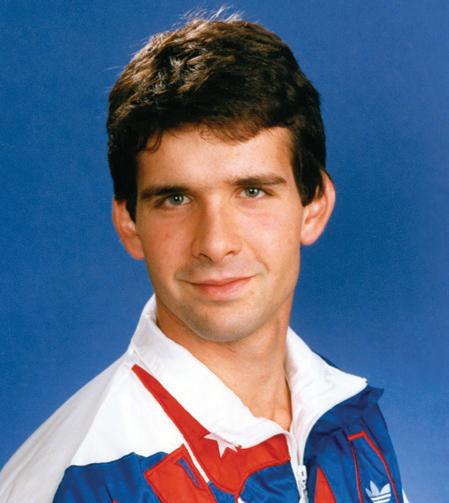
Glenn Florio (rowing, 1988)
Glenn Florio died on Oct. 26, 2020, at the age of 53.
Glenn was a member of the 1988 U.S. Olympic Rowing Team (double scull) and a bronze medalist in the 1986 World Rowing Championships (lightweight single scull). He was team captain of the highly successful New York Athletic Club Rowing Team from 1984-1990. He was a member of the United States National Rowing Team from 1984-1988. Glenn earned a Bachelor of Arts in economics from Fordham University, where he was a gold medalist in the single scull at the Collegiate National Championships.
He was a four-time United States high school champion in the single scull for Rye High School and won over 20 United States National Rowing Championships in various boats. He won his first national championship at the age of 13 and was a medalist in the World Rowing Championships by the age of 19.
At the time of his death, Glenn was in the fourth season as head coach of the rowing program at the Coast Guard Academy.
Glenn is survived by two teenage children.
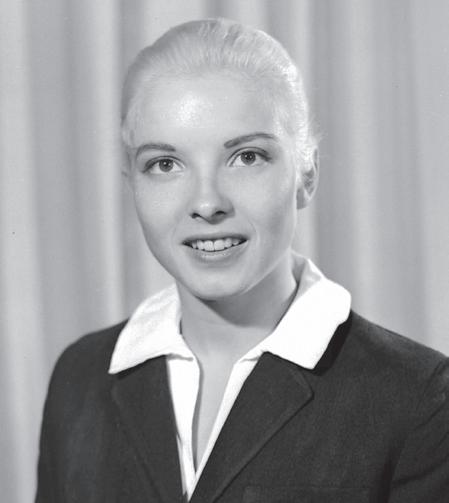
Muriel Davis Grossfeld (gymnastics, 1956, 1960, 1964, Coach 1968, 1972)
Muriel Grossfeld died on Jan. 17, 2021, at the age of 80.
Muriel spent most of her lifetime as an accomplished gymnast. She was an 18time national champion and member of the U.S. Olympic Team in Melbourne 1956, Rome 1960, and Tokyo 1964. After her third Olympic Games, Muriel retired as an athlete and began her pursuit fulfilling her longtime dream of making the U.S. a world power in gymnastics. She went on to conduct training camps, became head coach for the U.S. Olympic Team in Mexico City 1968 and Munich 1972, and even established the first private gymnastics school for women in the U.S., which was located in Milford, Connecticut.
Muriel’s involvement in the sport did not stop there; she judged many national championships, international competitions, and the Olympic Games Athens 2000. Muriel is one of only two American women to ever compete, coach and judge the Olympic Games. Her achievements in the world of gymnastics are too numerous to list, however it is that Muriel’s influence in the sport paved the way for gymnasts today.
In her personal time, Muriel enjoyed reading, gardening and spending time with her many animals. She had an affinity for dachshund dogs, and she owned many throughout her life. She will be missed deeply by all who had the pleasure of knowing her.
Muriel leaves behind her brother, Bruce, of Apollo Beach, Florida; friend, George Ward; and many friends and fellow athletes she met throughout her lifetime.
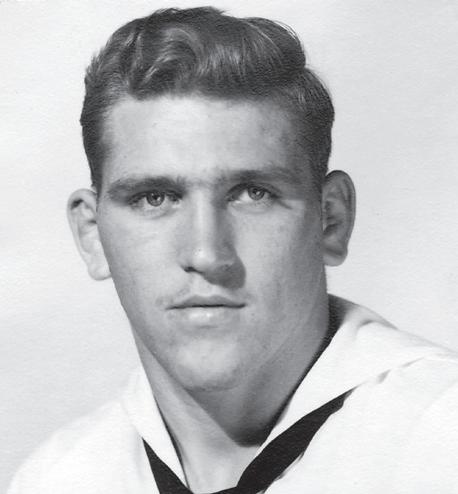
Dan Hodge (wrestling, 1952, 1956)
Dan Hodge died on Dec. 25, 2020, at the age of 88.
Dan was born in Perry, Oklahoma. He was raised in Perry attending school there and graduating from Perry High School in 1951. Just a few months later, on Aug. 2, 1951, he married his high school sweetheart Dolores Bradshaw. On Aug. 29, 1951, Dan joined the United States Navy, where he proudly served for over two years. It was during his

time in the Navy that he competed in the Olympic Games Helsinki 1952. After his tour of duty was completed, he attended the University of Oklahoma in Norman. During his collegiate days, he was a three-time national wrestling champion and went on to compete in the Olympic Games Melbourne 1956, earning a silver medal. In 1957, he earned his bachelor’s degree from the University of Oklahoma.
Dan worked in the oil and gas industry, but he was best known for his work in the entertainment industry as a professional wrestler. He was a loving father and grandfather and was happiest when surrounded by his children and grandchildren, playing cards at a large round coffee table in the family’s den. Dan enjoyed wood working and would often help his daughter with crafts and his sons with home improvement projects. Dan enjoyed hunting rabbits and squirrels or bigger game like deer, but truly enjoyed fishing. He would fish with his sons and with his grandchildren for bass, crappie, and most of all, for catfish.
He was preceded in death by his parents, William and Erma, and brothers William Hodge, Jr., and Jackie Hodge. He leaves behind his wife Dolores of the home, son Dan Hodge, Jr. (Lynn) of Perry, daughter Linda Cline (Kerry) of Perry, son Michael Hodge (Melanie) of Perry, grandchildren: Stephen Hodge (Amber), Patrick Hodge (Blake), Stacy Wilson (Bryan), Tyler Cline (Karlee), Leslea Wagner (Colby), Brent Hodge (Jordan), Clinton Hodge (Ashley). He is also survived by great grandchildren: Jaden, Cortnea, Camryn, Carder, Jackson, Hollie, Harper, Lillie, and Rylee; as well as his sister Louise Lovecamp of Oklahoma City.
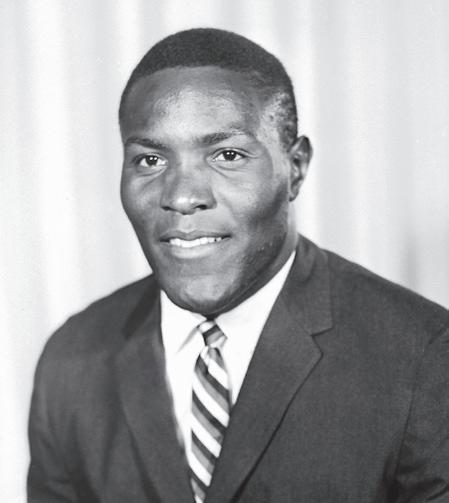
Rafer Johnson (track and field, 1956, 1960)
Rafer Johnson died on Dec. 2, 2020, at the age of 86.
Rafer Johnson was dubbed the world’s greatest athlete when he won the decathlon gold medal at the Olympic Games Rome 1960. In Rome, Rafer became the first Black athlete to carry the American flag at the opening ceremony. He ran a personal best in the 1500 meter. He had previously won the silver medal in the decathlon at the Olympic Games Melbourne 1956.
He was selected to light the Olympic flame at the Olympic Games Los Angeles 1984, later recalling that at age 49, he had prepared by running up and down a parking garage with five-pound weights. He also worked as a television broadcaster.
Raised in Texas without plumbing or electricity, and in central California, where his was the only Black family in town, Rafer went on to become one of the most celebrated track and field stars of his era and a trailblazer for African Americans at a time when the civil rights movement was gaining momentum.
Rafer was best known for his brilliance in the decathlon, a grueling 10-event, two-day competition that served as a showcase for his talent, stamina, and
relentless drive. He had turned to the event while in high school in 1952, when his coach took him to watch defending Olympic champion Bob Mathias at a nearby track.
Rafer broke Mathias’s world record just three years later, after winning the gold medal at the 1955 Pan American Games. By then he had enrolled at the University of California at Los Angeles, where he played basketball and prepared for the Olympic Games 1956.
Shortly before the Games, he suffered a knee injury that quashed his chance at the individual long jump. But he did well enough in the decathlon to take silver and finished behind Milt Campbell, who became the event’s first African American Olympic champion. Rafer faced additional injuries over the next four years, including from a car crash that sidelined him for months. He recovered and went on to become the best of the best in Rome, a victory that took on special significance amid confrontations between civil rights demonstrators and segregationists in the South.
While playing at a peach cannery as a boy, Rafer got caught in a conveyor belt that sliced open his left foot, requiring 23 stitches. He went on to star in four sports while in high school, including football, and was selected in the 1959 National Football League draft by the Los Angeles Rams. He never played in college or the pros.
In interviews, Rafer said that when he entered UCLA, he had planned to become a dentist or perhaps a minister. He was voted student body president before graduating in 1959 — in part, perhaps, for the same qualities that Sports Illustrated highlighted in naming him the 1958 Sportsman of the Year, when it called him “a rare concentrate

of some old Sunday School virtues: tolerance, humility and godliness.”
On the heels of his Olympic victory, he received the Amateur Athletic Union’s Sullivan Award as the country’s top amateur athlete and was named the Associated Press’s male athlete of the year. He was called on to deliver speeches across the country and soon met Robert F. Kennedy, the brother of the newly elected president.
They bonded over Rafer’s interest in the Peace Corps, and when Kennedy ran for president in 1968, he stopped working as a broadcaster at NBC to back the campaign. He was walking alongside Kennedy’s wife, Ethel, when gunfire rang out at the Ambassador Hotel in Los Angeles, where Kennedy was shot just after midnight on June 5, 1968.
Moments later, Rafer joined several others — including NFL lineman turned bodyguard Rosey Grier — in trying to hold down Sirhan Sirhan, a Palestinian immigrant who was later convicted of the killing. Rafer said that he pried the gun from Sirhan’s hand and slipped it into his pocket. (Grier offered a competing account, saying he was the one who disarmed Sirhan).
Rafer later told the Los Angeles Times that the assassination “was one of the most devastating moments in my life.” Healing came in part through the Special Olympics, which was founded months later by Kennedy’s sister Eunice Kennedy Shriver. She enlisted Rafer as an adviser and board member, and he helped start a California branch of the Special Olympics in 1969.
Rafer also had a brief acting career, appearing on TV shows including “Lassie,” “The Six Million Dollar Man” and “Roots: The Next Generations,” in
addition to movies such as “License to Kill” (1989), in which he played a Drug Enforcement Administration agent who assists James Bond. He would have appeared in “Spartacus” (1960) as well, he said, were it not for amateur-sports rules that would have required him to skip the Olympic Games.
In 1971, he became an executive at Continental Telephone and married Betsy Thorsen, a teacher. They had two children, Jennifer Johnson Jordan, who competed in beach volleyball at the 2000 Olympics, and Josh Johnson, an all-American in javelin at UCLA.
Rafer was inducted into the U.S. Olympic Hall of Fame in 1983, a year before lighting the torch at the Olympic Games. He had arranged to surprise his children with the torch-lighting, he said, although they initially seemed unimpressed. “But after they saw it, and they saw people around me and saw me signing autographs, they hung a little closer,” he told the Times. “It was like Dad was special.”
Rafer is survived by his wife Betsy, children Jennifer and Josh, and a brother.
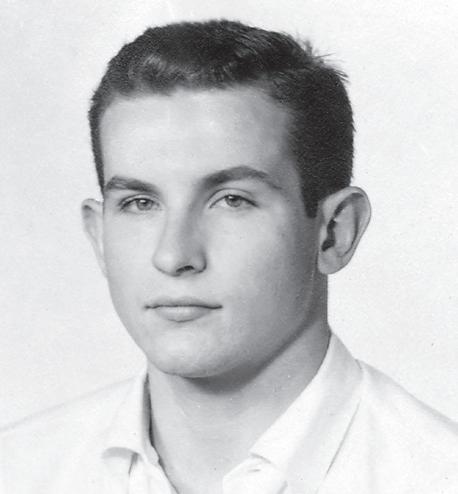
Burwell “Bumpy” Jones died on Feb. 6, 2021, at the age of 88.
At the age of five, a young Bumpy started swim racing, embarking on an
illustrious career that would span over 70 years, setting world records as a collegiate swimmer and again years later as a master’s swimmer.
Bumpy has taken part in many swimming firsts. He competed in the first Pan American Games in 1951 winning gold and bronze, he was the first world record holder in the 400-individual medley when a fourth butterfly stroke was added and competed during the first year of Masters swimming in the United States in 1971.
Born in Detroit in 1933, Bumpy chose swimming over other sports and music. At age 12, he enrolled at Matt Mann’s swimming camp, Chikopi, located in Ontario, Canada, where over the next several summer seasons he rose from camper to counselor. This began a lifetime coaching relationship with Matt that developed while he swam for Redford High School and continued into college at the University of Michigan.
Bumpy was a high school and college All-American and a three-time NCAA champion at the University of Michigan. He was a member of the 1952 Olympic gold medal winning 4×200-meter freestyle relay swimming in the preliminary heats. He competed on U.S. teams in Bermuda, Japan, and England. He set three world records in the 400-individual medley. In 1954, Bumpy was elected captain of Michigan’s swim team and was a Sullivan Award nominee.
In 1959, Bumpy graduated from the University of Michigan Medical School and then interned in Ann Arbor for one year. In the summer of 1960, after a five-year retirement from swimming, he spent one month training for the Olympic trials in Detroit. His time in the 200-meter freestyle greatly improved from 1952, but the best swimmers in

the country were also much faster. After failing to make the finals, he retired from swimming again and spent his next years in residency at the University of Virginia, in the Air Force, and finally at Duke University. It was during this time that he became an accomplished golfer, winning 28 state and local tournaments. In 1965, Bumpy moved to Sarasota where he began and continued his private practice in dermatology.
When Masters swimming began in 1971, it was thought to be a gettogether party for former swimmers. That soon changed from not only being a fun gathering, but also a highly competitive challenge, too. During his master’s career, which began at age 38, Bumpy won 110 National Masters Championships, five FINA Masters World Championships, seven Canadian and 22 YMCA championships. He has set 39 FINA Masters World Records and 145 Masters National Records. In his master’s career, he earned 38 number one, 18 number two and 10 number three master’s world rankings. His master’s times nearly equaled his best collegiate times. His competition has always been tough, and the camaraderie has been at its best.
Bumpy was inducted into the International Masters Swimming Hall of Fame in 2005. There is a masters meet hosted in his name in Sarasota, Florida, every year.
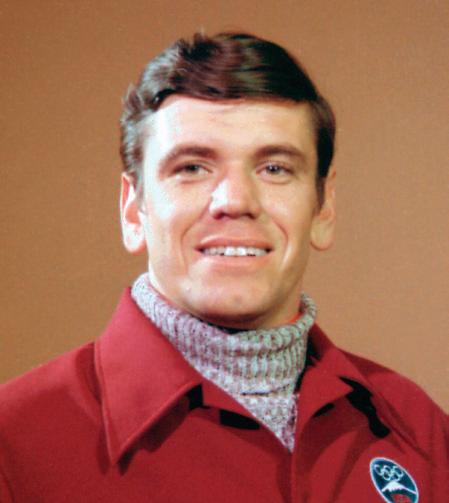
Paul Lamey
(bobsled and skeleton, 1968, 1972)
Paul Lamey died on Dec. 15, 2020, at the age of 81.
Paul was born in Manchester, New Hampshire, the son of the late Jean and Juliette (Clement) Lamey.
From childhood, Paul always had a need for speed. He graduated from Saint Anselm College and shortly thereafter, joined the U.S. Navy. He was a pilot, master parachuter and in 1963 at the Navy’s request, he started the U.S. Navy bobsled team.
Paul had quick reflexes and a knack for driving the corners that produced speeds of 85-90 miles an hour. He competed at the Olympic Winter Games Grenoble 1968 and again at the Olympic Winter Games Sapporo 1972 as Team USA’s #1 driver. He won eight consecutive North American championships, and six world championships. More recently, he carried the Olympic Torch in the Palm Beaches for the Atlanta and Salt Lake City Olympic torch relays. Paul wrapped up his bobsledding career by becoming a color commentator for all three major TV networks for Winter Olympic coverage.
Paul’s military career spanned 24 years, the last 11 spent at the Pentagon. He retired in 1980 at the rank of Navy
Commander. After his career in the military, he became the director of marketing for the Unlimited Hydroplane Racing Association in Seattle and finally as senior director of licensing for PGA of America in Palm Beach Gardens, Florida.
Friends will always remember his big smile and larger-than-life personality.
Most of all, he was committed to his family, loving them with all his heart. But the true light of his life was his grandson, Jacob. They lovingly referred to each other as “Donut” and “Cupcake.” Jacob taught Donut about the sport of lacrosse and Cupcake taught Jacob the sport of golf, but more importantly he taught Jacob about the importance of self-confidence, humility, and appreciation along with how to be a natural leader.
Paul is survived by his wife Patricia Roberts, his daughters Judy Lamey (John), Michele Eassa (Steve), grandson Jacob, brother Robert Lamey (Cindy) and nephew Ryan Lamey.
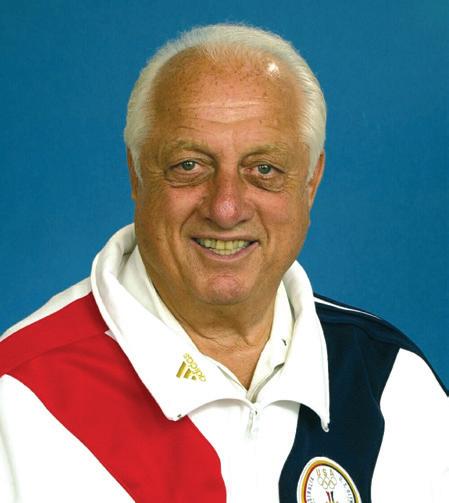
Tommy Lasorda (baseball coach, 2000)
Tommy Lasorda died on Jan. 7, 2021, at the age of 93.
Thomas Charles Lasorda was born in Norristown, Pennsylvania.
He attended Norristown High School and was signed by the Philadelphia

Phillies in 1945 as a 17-year-old, lefthanded pitcher/first baseman. For a time, Tommy’s hitting looked more impressive than his pitching. He debuted with the Concord Weavers in 1945 and had a 3-12 record and 4.09 ERA in 27 games, including 13 starts. He also appeared in 40 games in the field and hit a respectable .274, albeit with just one home run. That was the only season he was used as a two-way player. Tommy was inducted into the Army and missed the next two seasons to serve in the military.
Even though he was out of professional baseball, Tommy continued to pitch for Fort Meade and Fort McClellan. He returned to pro ball in 1948 with the Schenectady Blue Jays of the Canadian American League. He had a 9-12 record but showed he was capable of some impressive mound feats. He once struck out 25 batters in a 15-inning game against Amsterdam and singled home the winning run, too.
After the 1948 season, Tommy was claimed by the Dodgers organization that would last pretty much the rest of his baseball career, give or take a few seasons as a minor-league pitcher. He turned in a pretty good season for Class-A Greenville in 1949, winning seven games against seven losses and posting a fine 2.93 ERA. After that season, the Dodgers moved him up to AAA, and he stayed there for pretty much the rest of his career.
Early on in his time in the Dodgers organization, Tommy was brought to its training camp at Vero Beach and was given a chance to pitch in an intrasquad game. The nervous lefty walked the first four batters he faced. Manager Charlie Dressen came out to give him the hook, and Tommy protested. “I’ve waited four years for this chance, and
now I walk one man for each year. Don’t take me out!”
He joined the Montreal Royals in 1950 and spent the next four full seasons there, except for a month he spent in the St. Louis Browns organization in 1953. The Brownies acquired his contract in February and returned him to the Dodgers in March — reportedly, Browns owner Bill Veeck did not have the $50,000 to pay for Tommy and had to send him back. Tommy’s wins gradually increased from nine in 1950 to 17 in 1953, and his ERA dropped down to 2.81 as well. By the end of the 1953 season, he was still just 25 years old. He completed 12 of his 29 starts and struck out 122 batters in 208 innings. He had developed a very good curveball (as well as an effective brushback pitch) and was determined to get a long sought-after promotion to the major leagues.
Tommy’s break finally came in 1954. He won 14 games for Montreal and was brought to the majors on August 1, when the team sent pitcher Bob Milliken to the minors. He made his debut on August 5 in an eventual 13-4 loss to the St. Louis Cardinals. He worked three innings and gave up three runs on six hits in three innings, including a solo homer to catcher Bill Sarni. He appeared in a total of four games for the Dodgers and allowed five runs in nine innings, with five walks and five strikeouts. Tommy’s 1955 season was of a similar nature. He was brought up from Montreal in May, appeared in four games and was drilled for six runs in four innings. He was sent back to the minors with a 13.50 ERA.
The Philadelphia Athletics bought Tommy’s contract in the spring of 1956, ending his relationship with the Dodgers for a spell. He made the team out of spring training and picked up his only
career save in his first American League appearance. With two outs in the ninth inning and the Athletics leading Detroit 2-1 with the tying run on second base, he was summoned from the pen to face Earl Torgeson. After throwing a wild pitch to allow the baserunner to move to third, Tommy retired Torgeson on a grounder to second base to preserve the win.
Tommy was a decent reliever for Kansas City. He started a few games and had much less success there. His luck ran out when the Yankees pounded him for five earned runs in a two-inning start on June 6 and then hit him for a couple more runs in a relief appearance the very next day. Those two outings blew his ERA up from 4.07 to 5.72. He never had a scoreless outing again, and after Cleveland rocked him for five runs in a third of an inning on July 8, Tommy’s ERA had inflated to 6.15.
He was traded to the Yankees soon after and assigned to their AAA team in Denver, and rumor had it that he did not go quietly. Right after the pitcher departed Kansas City, A’s manager Lou Boudreau was seen wearing dark glasses — possibly because of an eye infection, but possibly because Tommy did not take news of his demotion well and left Boudreau with a black eye before leaving the clubhouse.
Tommy’s major-league career as a pitcher ends there. In parts of three seasons, he appeared in 26 games and had an 0-4 record and a 6.48 ERA. He struck out 37 batters in 58.1 innings and walked 56.
The Yankees kept Tommy in AAA Denver through the middle of 1957 before sending him back to the Dodgers. He had his best season as a pitcher in 1958, when he went 18-6 with

a 2.50 ERA for Montreal. He also had 16 complete games and five shutouts. He was working as a player-coach-road secretary-interpreter-father figure for the younger players and helped light a fire that led the Montreal Royals to a firstplace finish in the International League. He may have done too good a job, as the IL President Frank Shaughnessy had to tell the Royals’ manager Clay Bryant, Tommy, and infielder George “Sparky” Anderson to ease up on the umpires or else.
His playing career ended in July of 1960. He was in the midst of a terrible year on the mound and was released in order to become a scout for the Dodgers in the Pennsylvania area. He won 136 games in a 14-year career in the minor leagues, including 107 with the Montreal Royals. He also won 10 playoff and Little World Series games for the Royals, making him the franchise’s winningest pitcher. The Dodgers named Tommy manager of the Pocatello Chiefs in the Pioneer League in 1965, kicking off his managing career. He stayed in the low minors with the Dodgers for several years, posting winning records consistently with teams in the Pioneer League and the Arizona Instructional League. He moved up to the Dodgers’ AAA teams and saw the same success, and he was named the Sporting News Minor League Manager of the Year in 1970, when his Spokane team won the Pacific Coast League pennant by 26 games. Many of the players who would become standouts for the next decade or so — Steve Yeager, Ron Cey, Davey Lopes, Steve Garvey, Bill Russell, Bill Buckner — had Tommy as their minorleague manager.
Tommy made it back to the majors when he was added to the Los Angeles coaching staff in 1973. Speculation grew that he would take over the role
of Dodgers manager after Walt Alston retired.
He had his chances to manage elsewhere; Atlanta, Pittsburgh, Montreal, and Kansas City made offers. He was the rare managerial candidate who only wanted one job, and he waited patiently for Alston to retire, which he finally did near the end of the 1976 season. Tommy managed the final four games as the team’s first new manager since before the team moved to Los Angeles.
Tommy was the embodiment of The Dodger Way before it was known as such. He was a larger-than-life persona who was a perfect fit for the larger-than-life city of Los Angeles. He schmoozed with Hollywood’s stars like Frank Sinatra, Johnny Carson, and Milton Berle. He lived for Italian food and fine cigars. Despite a team that had a wealth of talented players, including an All-Star infield, he became the face of the franchise. He said things like, “I get up in the morning and I open my eyes and I thank the big Dodger in the sky because I’m the luckiest SOB in the world,” and he meant every word of it. His rah-rah, bleed-Dodger-blue approach may not have worked for everyone on the team, but it was hard to argue with the results.
The Dodgers won the NL pennant in each of Tommy’ first two full seasons as manager, losing to the New York Yankees in the World Series in 1977 and 1978. Undaunted, the Dodgers returned to the World Series in 1981 and beat the Yankees for a spot of revenge. Tom picked up his other World Series championship in 1988 when the Dodgers upset the Bash Brothers of the Oakland A’s in 1988.
Despite his friendly approach, Tommy’s
infamous temper could return in a heartbeat. Ask any umpire who made a questionable call on the field or a reporter who asked what Tommy considered a dumb question. He once got in a heated argument with former friend and coach Jim Lefebvre in the 1979-80 offseason that culminated with Lefebvre socking him in the nose.
On a lighter note, his personality also made him a prime target for his team’s pranksters like Jay Johnstone, Jerry Reuss and Don Stanhouse. They stole his Sinatra photos off the wall of his office and replaced them with photos of themselves. They locked him inside his room in spring training. The hotheaded manager took it in stride, though.
“When I was a youngster, I wasn’t what you would call an altar boy. I did a lot of things wrong, and I was sorry for them. I repented. I went to confession. I thought maybe the statute of limitations had caught up with the punishment due me and the Lord had forgotten,” Tommy said. “But I think now I have gotten my penance. Johnstone, Stanhouse and Reuss. That is my penance on Earth. The Lord is now saying, ‘Tom, it’s all caught up to you.’”
Tommy’s oversized personality (and frequently, his oversized stomach) made him an easy target, and it led some people to dismiss him as a cheerleader who hugged his players too much. However, he was a sharp tactician. The Dodgers won the 1981 World Series in part because he outmanaged Yankee’s skipper Bob Lemon. He intentionally walked a batter in the climactic Game Six to bring up Yankees pitcher Tommy John in a key situation, which forced Lemon to counteract with a pinchhitter. The move worked, as the Yankees replaced the tough John after just four innings with George Frazier, who

allowed three runs in an inning of work to put the Dodgers ahead for good.
Tommy was named NL Manager of the Year twice, in 1983 and 1988. He also finished in the top-five four other times. He had a career record of 1,599-1,439 for a .526 record. The Dodgers, over his 21 seasons at the helm, had a few bad years but never a long stretch of futility. They finished in first place eight times and second place six times, with just six losing seasons.
The Dodgers lost 99 games in 1992, falling to sixth place in the NL West. Injuries to key free agents like Eric Davis, Juan Samuel and Darryl Strawberry forced the Dodgers to try untested rookies. Some, like Jose Offerman, Eric Young and Tommy’s godson, Mike Piazza, turned out well, but at the time, people were starting to question if the 64-year-old Tommy was the right man for the team. He was thought by many to be the figurehead, approving the moves that were being made by his coaching staff, notably Bill Russell. He guided the team to a .500 finish in 1993 and then two first-place finishes in 1994 and 1995. The 1994 season was wiped out by the players strike, and the 1995 Dodgers were knocked out of the first round of the playoffs, losing three straight games to the Cincinnati Reds.
In 1996, Tommy suffered a mild heart attack and had an angioplasty on June 26. He was also treated for an ulcer and was hospitalized for about a week. He missed a total of 30 games during the season. Still, the Dodgers were fighting with a 41-35 record when he announced his retirement as the Dodgers’ manager. He was named a team vice president, and Russell assumed the duties of Dodgers manager.
Tommy retired as the 13th winningest
manager in baseball and one of only four to spend 20 straight years managing the same team.
Tommy was named an interim general manager in June of 1998, a role he held for about three months. He was then named senior vice president that September. While he traveled the world as a goodwill ambassador to baseball, led the U.S. team to a gold medal in the Olympic Games Sydney 2000 and was a spokesperson at two World Baseball Classics, he was never away from the Dodgers for very long. In one of his last public appearances, he watched the Dodgers win the 2020 World Series over Tampa.
“When I die,” he famously said, “I want inscribed on my headstone, ‘Dodger Stadium was his address, but every ballpark was his home.’”
Tommy was inducted into the Baseball Hall of Fame in 1997 and was baseball’s oldest living Hall of Famer.
Lasorda is survived by his wife of 70 years, Jo, as well as a daughter, Laura. His son, Tom Jr., died in 1991 at the age of 33.
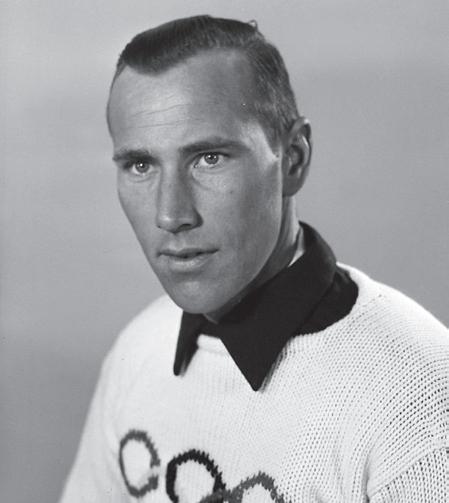
Donald McDermott (speedskating, 1952, 1956, 1960)
Donald McDermott died on Nov. 1, 2020, at the age of 90.
Don graduated from Fort Lee High
School and attended Farleigh Dickinson University. He served as a helicopter mechanic in the Army during the Korean War. Starting as a clerk, Don had a lengthy career with the U.S. Postal Service, retiring as Postmaster of Edgewater, New Jersey, in 1989.
Don competed at the Olympic Winter Games Oslo 1952, where he won silver. He carried the flag for the United States team at the Winter Olympic Games Squaw Valley 1960. In addition to skating, Don was an avid bicyclist, sailor, skier and occasional golfer.
Don is survived by his wife of 59 years, Anneliese; four children, Andrea Hyer, Michael (Patricia), Shawn and Mark (Jennifer) and eight grandchildren; Kevin, Maura, Gregory, Ryan, Kate, Caroline, Dillon, and William.
Don was born on Dec. 7, 1929, the son of Joseph Patrick McDermott and Wilhelmina (Van DeWelde) McDermott, who, along with his sister Audrey, and son-in-law Robert Hyer preceded him in death.
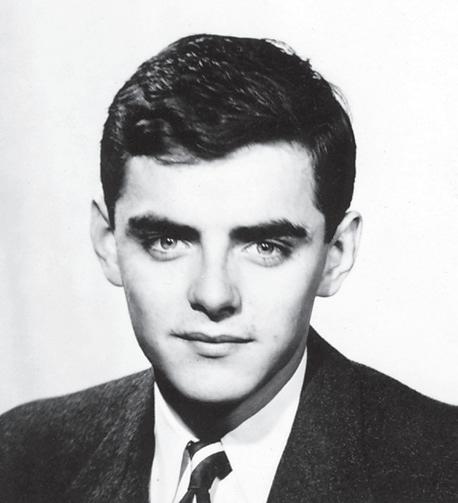
James “Jimmy” McLane Jr. (swimming, 1948, 1952)
James McLane died on Dec. 13, 2020, at the age of 90.
Jimmy was born during the depression in Pittsburg, Pennsylvania, and later raised by a single mother in Akron, Ohio. He attended Phillips Academy, Andover,

via a scholarship for swimming.
He then went on to Yale University where he competed on the swim team. There, he was a member of the Skull and Bones, Aurelian Society, Elizabethan Club and the Pundits.
He was a graduating member with the Class of 1953. During the Korean Conflict he served in New York with the U.S. Army Intelligence.
He swam for the U.S. Army for two years. During this time, he married his first wife, Barbara Hamby who passed in 1981.
Jimmy’s swimming career extended from 1944 through 1955, winning three Olympic gold and one silver medal. One of his greatest contributions to swimming was competing as a high school boy wonder.
He was the youngest-ever men’s AAU swimming champion when he won the national long-distance title at age 13, swimming for Akron’s Firestone Swim Club.
He was the forerunner of a youth movement that put U.S. swimming back on top.
From 1945-1948, he completely dominated U.S. outdoor middledistance swimming with 13 national and two Olympic championships, and he was perhaps the greatest tactician in swimming in his era.
He was most proud of competing in the Olympic Games London 1948 and the Olympic Games Helsinki 1952.
Attending Yale University shaped Jimmy’s personal, professional and athletic life. He ended his swimming
career as the U.S. team’s oldest Pan American champion at 24 by winning three gold medals. In 1970, he was inducted into the International Swimming Hall of Fame.
Jimmy had a distinguished career in business, working for Life Magazine and General Mills. He retired in the middle of his adult life due to Multiple Sclerosis. He stayed active and fully embraced life every day.
He was a devoted husband, an adored hero to his children, and lifelong friend to so many athletes, classmates, and colleagues who knew him.
In an interview, his advice to aspiring Olympians is to enjoy swimming for what it is and take pride in the work not the reward. “Medals are important to the average person. They are not very important to me, when I remember my achievements, I remember the work and training not the medal, that’s what is most valuable.”
In addition to his wife Carol of 16 years, he is survived by three sons, James McLane III of California, Peter McLane and his wife Beth Ann of Missouri, Mathew McLane and his wife Cathy of Minnesota; a daughter, Susan McLane of New York; a brother, Timothy McLane of Ohio; sister Noel McLane of Washington; seven grandchildren and two great-grandchildren.
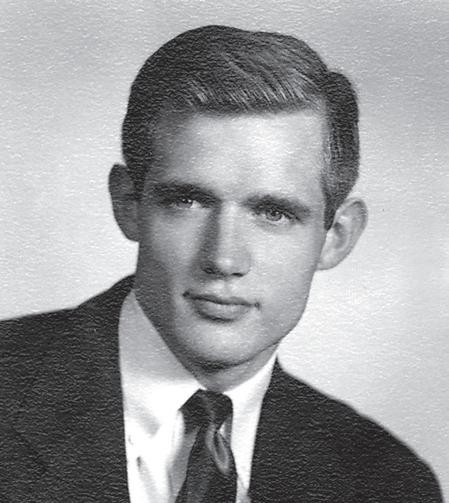
Charles “Charlie” Moore, Jr. (track and field, 1952)
Charles “Charlie” Moore, Jr. died on Oct. 8, 2020, at the age of 91.
Charlie was an Olympic gold and silver medalist, business leader, university athletics director, and philanthropist.
The eldest child of Charles Hewes Moore, Sr. and Jane Scott Moore, Charlie was born in Coatesville, Pennsylvania, on Aug. 12, 1929. He attended local schools in Coatesville and Unionville. Charlie graduated from Mercersburg Academy in 1947 and from Cornell University in 1952 with a bachelor’s degree in mechanical engineering.
He is survived by Judith McClellan Moore, his devoted wife of 49 years; eight children; 16 grandchildren; and one great grandchild, as well as his sister, Anne Moore Batley. In addition to his parents, Charlie was predeceased by his son, Charles H. Moore III, and his brother, Thomas G. Moore. His family meant the world to him. Rita Moore (widow of Charles H. III), James, David, Susan, Kevin and his wife Mariangela, Chris and his wife Louise, Margi, Brian and his wife Diane, and Amanda will miss him greatly. His grandchildren will also mourn his loss.
Following in the steps of his father, who was a hurdler and a member of

the U.S. track and field team in the Olympic Games Paris 1924, Charlie excelled in the hurdles. Throughout his running career, Charlie never lost a 400-meter or 440-yard hurdle race. While at Cornell, he won many National Collegiate Athletic Association (NCAA) and Amateur Athletic Union (AAU) titles. In the Summer Games Helsinki 1952, Charlie won a gold medal in the 400-meter hurdles while setting the Olympic record in that event. In the same Games, he ran the third leg of the 4x400-meter relay race for the American team, which won the silver medal. His relay team broke the current world record by four seconds, while losing to the Jamaican team by a mere onetenth of a second. He finished second in the Sullivan Award balloting for top U.S. athlete in 1952 and was selected in 1996 as one of Xerox’s 100 “Golden Olympians”.
Later in life, Charlie served in several capacities on the U.S. Olympic Committee and also was a member of the President’s Council on Fitness and Sports. In 1999, he was inducted into the U.S. National Track and Field Hall of Fame. He was also an inaugural member of the Cornell University Athletic Hall of Fame.
After returning from the Games, Charlie immediately went to work in his family’s business, Lenape Forge, located in Lenape, Pennsylvania. From 1952 to 1994, Charlie held senior management positions at several companies: Lenape Forge, Lapp Insulator, Allied Thermal, Interpace Corporation, Clevepak Corporation, and Ransburg Corporation. He also was managing director of Peers & Co. and vice chairman of Advisory Capital Partners, Inc.
After more than four decades in the
private sector, at the age of 65, Charlie was asked to return to his alma mater, Cornell, to serve as the university’s athletic director. He would often say, “that was the best job of my life!” During his five-year tenure at Cornell, Charlie energetically led initiatives to expand women’s athletic programs, build new state-of-the-art athletic facilities, and increase alumni support across the board for athletics.
At age 70, he became the founding executive director of the Committee Encouraging Corporate Philanthropy (CECP), a new non-profit organization headquartered in New York and created by Paul Newman, John Whitehead, and Peter Malkin. Charlie worked in that capacity for 14 years. Today, CECP members annually invest billions in their communities worldwide. Over the years, Charlie served on several for-profit and non-profit boards, including Mercersburg Academy Board of Regents, Indiana National Bank, Turner Corporation, Sports Authority, the Smithsonian Institution, and the Smithsonian American Art Museum.
Charlie and Judith moved to Laporte in 2013 and settled into “Edgemoor,” the retirement house they had built in 2006. It is a wonderful place for their large family to gather frequently. After retiring, Charlie published a memoir titled “Running on Purpose”. He wrote a second book, “One Hurdle at a Time”, which was designed for young readers. Charlie was an active member of the Eagles Mere-Laporte Lions Club and a faithful attendee at St. John’s In-TheWilderness Episcopal Church in Eagles Mere.
Charlie and Judith were passionate about experiencing the world and were fortunate to travel to all seven continents. They were fascinated by the
cultures and histories of other countries and gathered many new friends in their travels. In addition, long after he had put away his running shoes, Charlie took his family to several Olympic Games.
Charlie cared deeply about everyone in his full life -- and had the gift of making each of them feel special. A truly exuberant person, Charlie made friends wherever he went and will be missed by many.

Larry Questad (track and field, 1968)
Larry Questad died on Oct. 29, 2020, at the age of 77.
Larry Ronald Questad was born on July 10, 1943, in Livingston, Montana. He died on Oct. 29, 2020, at St. Luke’s Hospital Boise with family and friends at his side. Complications from pneumonia caused his sudden death.
Raised in Livingston, Montana, Larry was a gifted student and athlete who excelled at track. He won state titles in the 100- and 200-yard dashes three times each and was inducted into the Montana High School Association Athletes’ Hall of Fame in 1995. At Stanford, he was a three-time All American (1963, 1965, 1968) and was later inducted into the Stanford Athletic Hall of Fame. He won the 100 and 200 at the 1963 World Games in Helsinki, Finland and matched that feat the same summer at the World Communist

Games in Moscow, where he was one of three American invitees.
Upon graduation from Stanford, Larry took a brief hiatus from sports to earn a master’s degree at University of Southern California. In 1968 he returned to training and qualified to compete at the Olympic Games Mexico City 1968. Having achieved his lifetime goal of becoming an Olympian, he retired from track competition.
Hiring on with IBM in 1969, his career moved him and his family across the United States: Los Angeles, Raleigh, San Antonio, Princeton, and, finally, Boise. Declining another corporate move in 1994, Larry retired from IBM. He and his wife, Liz, bought Superior Steel Products, a small steel fabrication and manufacturing business in Caldwell, Idaho. They were blessed that both sons decided to return to Boise, after finishing their educations, and joined the family business. Sons Christian and P.L. have successfully grown the business and, subsequently, bought it from their proud parents.
Larry was fortunate to enjoy so much with his family and friends. From coaching his sons’ sports, leading Boy Scout troops, timing races on cold ski hills at Bogus Basin, or chasing pheasants through a corn field, he lived life fully. An avid fan of Boise State football, the games, and tailgates (with his infamous Ramos gin fizzes) were a fall event for thirty- four years. On safari in Africa, cruising the oceans of the world, riding his Harley at Sturgis, or tinkering with his beloved 1969 Porsche, he made precious memories and was grateful for the company of his family and supportive, exuberant friends.
Larry is survived by Liz, his wife of forty-
eight years, and sons Christian (Glory), P.L. (Christina), and grandchildren Henry, Alta, Eva, and Rye.
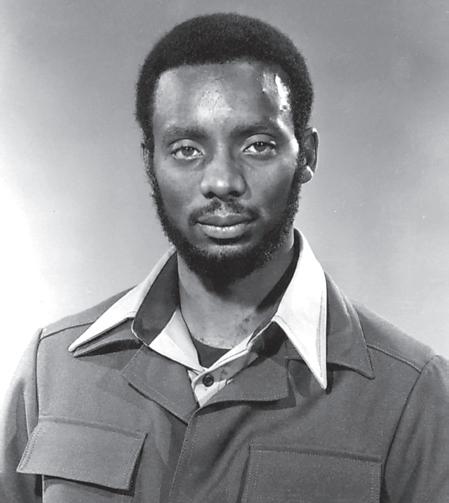
Arnie Robinson, Jr (track and field, 1972, 1976)
Arnie Robinson, Jr died on Dec. 1, 2020, at the age of 72.
Arnie was the third child and the eldest son born to Arnie Paul Robinson Sr. and Verneater Robinson. His parents and younger brother Michael D. Robinson preceded him in death.
Arnie was known to his family and friends as Arnie, Bro Arn, (Brother Arnie), which he proudly displayed on his car license plate. He was called Coach Robinson by all his students. He attended and graduated from Samuel F.B. Morse High School, San Diego Mesa College and San Diego State University before he joined the U.S. Army.
Arnie was an amazing athlete as a long jumper. He won bronze at the Olympic Games Munich 1972 and gold at the Olympic Games Montreal 1976. He also was an acclaimed high and triplejumper. He had personal bests of 2.08 meters in the high jump and 15.54 meters for the triple jump.
In 1982, he began coaching at Mesa College and served as a professor in health and exercise science until his retirement after 23 years of dedication.
His 1998 women’s team won the California Community College state championship.
Arnie retired from coaching and teaching in 2010. On April 13. 2013, San Diego Mesa College honored him by naming its premier high school and college invitational meet “The Arnie Robinson Invitational”.
Arnie also served as USATF San DiegoImperial Youth Track and Field chair from 1994-2004 where he mentored thousands of youth athletes over the years. He also served as the USATF associates vice president from 19972007.
Arnie was inducted into San Diego’s Breitbard Hall Of Fame in 1985, the USA Track and Field Hall of Fame in 2000, and the California Community College Cross Country and Track Coaches Association Hall of Fame in 2005.
Arnie is a true legend where he will be remembered for always placing his student-athletes first and being a wonderful ambassador for the sport of track and field.
Arnie leaves behind to mourn his passing his son Paul Arnie Robinson (PA), three sisters Margaret L. Tucker, Carolyn J. Johnson, and Arnett M. Lavergne; a cousin, who resides in Columbus, Ohio, Stephanie (Ron) Skruggs; niece, Candace (Gregory) White and their daughters, Cierra, Cheyenne, and Christina; nephews, Leon C. Lavergne Jr. (son- Leon J. Lavergne), Michael (Adriana) Robinson II and their daughters, Leilani, Christina, and Mia. In addition to a host of many dear friends and loved ones.
We all loved him dearly, but God loved him best.

John Russell
(equestrian, 1948, 1952, coach 1960, 1972)
John Russell died on Sept. 30, 2020, at the age of 100.
LTC John William Russell, Sr. was born Feb. 2, 1920, to Harry and Rose Russell on a dairy farm in Harrisburg, Pennsylvania. He died peacefully on Sept. 30, 2020.
In his 100 years of life, John participated in a phenomenal number of adventures in the military and civilian worlds. He began his military career when he joined the 104th Cavalry which was a mounted National Guard unit with several hundred horses. In 1943 he was commissioned as a 2nd Lt. in the Cavalry and fought in World War ll in Africa, Italy, and Germany. He was wounded at Casino for which he was awarded a Purple Heart. His decorations included the Soldier’s Medal, American Defense Service Medal, American Campaign Medal, European-AfricanMiddle Eastern Campaign Medal with two Bronze Service Stars, World War ll Victory Medal, Army of the Occupation Medal with German Clasp, National Defense Service Medal, and Honorable Service Lapel Pin WW ll. After the war, he served with the 18th “Blue Devil” Division in northern Italy where he helped liberate several horses, some of which helped to form the United States Olympic equestrian team. John’s
riding activities took him all over Europe and the United States where he had been assigned to Ft. Riley, Kansas. Before he competed and won bronze in the Olympic Games Helsinki 1952, he became the first foreigner ever to win the Hamburg Spring Derby riding a Texasbred Quarter horse named Rattler. He also competed in the Olympic Games London 1948.
In 1956, John ended his competitive career and became coach of the U.S. modern pentathlon team when it was located in San Antonio and after it moved to Denver, he continued to be one of its staunchest supporters. LTC Russell was inducted into the Show Jumping Hall of Fame and Museum, received the United States Hunter and Jumper Lifetime Achievement Award, and was inducted into the San Antonio Sports Hall of Fame.
LTC Russell is survived by his wife, Shane, his oldest son, John W. Russell, Jr. and wife Ruth, and grandsons, William and McLean Russell, and his youngest son, Douglas E. Russell and his wife, Laurie, and their son, Sam. John also has 4 great grandchildren, William and Wyatt Russell, and Riley and Scarlett Russell.
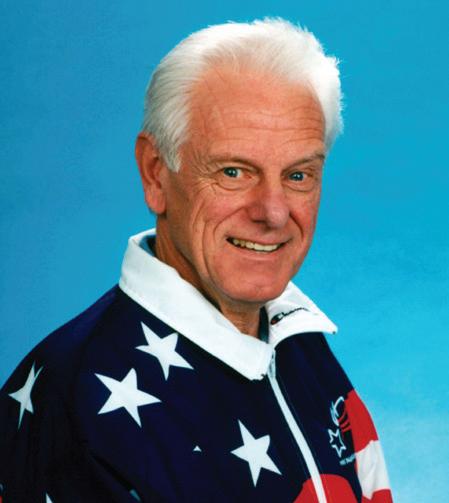

Ernest “Ernie” Seubert died on Feb. 13, 2021, at the age of 91.
Ernie was born in Ridgewood, Queens, New York and has resided in Sparta, New Jersey; Cedar Grove, New Jersey; Little Falls, New Jersey; Woolwich, New Jersey and finally Monroe Township, New Jersey.
Ernie participated in the sport of bicycling as both an athlete and volunteer. He served as the cycling road coach for the Olympic Games Munich 1972 and was the Assistant Chef de Mission of the U.S. Olympic Committee at the Olympic Games Barcelona 1992. For more than 30 years, Ernie served as a member of the Board of Directors of the Amateur Bicycling League of America, including four years as its president. He also served in a similar role for the U.S. Olympic Committee, with a four-year stint on its Executive Committee. In 2002 he was recipient of the U.S. Olympic Committee’s President Award. Ernie was a member of the U.S. Bicycling Hall of Fame’s Board of Directors starting in 1996, serving as its president for four years, and a member of the Executive Committee where he chaired the Nominations and Selection Committee. Recognized for his decades of varied contributions to the sport, Ernie was inducted into the Hall in 1994.
Ernie enjoyed a full life as a father, grandfather, great grandfather, uncle, and great uncle plus he had a rewarding career as an insurance broker most recently with Campbell Solberg Associates in New York City. He enjoyed playing tennis and loved to travel, especially vacationing with Maryann and family.
Ernie is survived by his loving fiancée Maryann Egan; children Debbie Griffith (Todd), Beth Hase (Bill), Kathy Pride (John) and Ernest Jr (Kathleen Milano); sisters, Barbara Lambart and
Ernest “Ernie” Seubert (cycling coach, 1972)
Elizabeth Tiller (Ernie), stepchildren, numerous grandchildren, and greatgrandchildren. He was predeceased by his first wife Doris Seubert, second wife Annette Seubert, brother Henry Seubert, stepson Stephen Egan and his parents, Adam and Barbara (nee Mueller) Seubert.

Stephen “Steve” Smith (track and field, 1972)
Stephen “Steve” Smith died on Sept. 23, 2020, at the age of 68.
Steve attended South Torrance High School. He was the CIF California State Meet champion. His first college was the University of Southern California. He started the year his nemesis, Bob Seagren, graduated. After one year, he left for Long Beach State. At Long Beach State he was refused permission to work with his coach, Dick Tomlinson, who was not on the college staff, so he ended up training with the Pacific Coast Club instead.
Steve competed at the Olympic Games Munich 1972. In 1983 he was involved in a car accident, breaking his ankle, which ended his international polevaulting career. He became a real estate agent, although he continued to compete in some masters’ meets, mostly as a sprinter, but occasionally vaulting.
Steve was voted by the experts at Track and Field News to be ranked among the
best in the USA and the world at the pole vault during his career. He was ranked during his early career and again when he returned to amateur competition.
In 2012, Smith was inducted into the United States National Pole Vault Hall of Fame.

Leon Spinks, Jr. (boxing, 1976)
Leon Spinks, Jr died on Feb. 5, 2021, at the age of 67.
Leon flashed a broad grin, exposing the prominent gap in his front teeth, then raised a weary arm skywards as he was declared the new world heavyweight champion at the end of just his eighth professional bout.
An out-of-shape Muhammad Ali had underestimated Spinks at the Las Vegas Hilton in February 1978 and paid the price as ‘Neon Leon’ was given the nod by a split decision in one of the most stunning upsets in the history of boxing.
A fitter and sharper Ali put down another marker on his path to greatness in the immediate rematch exactly seven months later, and Spinks would never reach the same stratospheric heights again.
He was beaten up and stopped in three rounds by Larry Holmes in another world heavyweight title tilt in June
1981 and an unsuccessful pursuit of cruiserweight honors fell flat in a career which went on too long past its peak.
It was not until the mid-1990s that he hung up his gloves, finishing with a record of 26 wins, 17 defeats and three draws, but the consequences of his profession meant his fighting days did not end with his ring retirement.
Leon, who battled arthritis and dementia, was found to have shrinkage in his brain and was largely confined to a wheelchair in his later years, while he was diagnosed with advanced stage prostate cancer in 2019.
Yet fighting was all he knew from a very early age after being born into a poverty-stricken neighborhood in St Louis on July 11, 1953, brought up by his mother with his father largely out of the picture.
He and younger brother Michael, who went on to win world titles in the light-heavyweight and heavyweight divisions and even avenged Leon’s loss to Holmes, used boxing as a means to protect themselves in their formative years.
Leon continued to box when, as a teenager, he joined the United States Marine Corps, where he had several of his front teeth knocked out after being headbutted in one of his early bouts, resulting in his famous gap-toothed grin.
The wounds did not deter him, as he and Michael were selected to compete for the U.S. boxing team at the Olympic Games Montreal 1976. Both came back home with gold medals, Leon at light-heavyweight and Michael at middleweight.

While his younger sibling was initially resistant to switching to the paid ranks, the older Spinks embarked on his professional journey months later with gusto, winning six times and drawing once in 1977.
It may have been that failure to beat Scott LeDoux which persuaded Ali to think Leon was an easy world title defense. Leon, though, would defy 10-1 odds to outpoint an ill-prepared Ali after 15 grueling rounds.
It was close - two judges gave Leon the decision by scores of 145-140 and 144141, while a third plumped for Ali 143142 - but the unexpected result meant a new undisputed heavyweight champion was crowned.
Leon was stripped of the WBC title after favoring a return bout over a fight against mandatory challenger Ken Norton later on in 1978, and Ali would go on to reclaim the lineal heavyweight title for a record third time.
It proved to be the last victory of Ali’s storied career, but Leon was adamant years later he had done enough to get the verdict, saying, “They wanted Ali (to win). It is politics. It ain’t what you know but who you know.”
Defeat at New Orleans’ Superdome marked a prolonged decline for Leon, who pocketed a multi-million-dollar sum from his rematch against Ali but was living in a homeless shelter just a few years after retirement.
Many assumed he partied away his fortune, but he insisted a lawyer’s avarice was mainly to blame, while he lamented that several opportunists stole his dentally repaired teeth over the years.
He once told the Observer, “They love my smile so much they steal my teeth. Sometimes I leave them in the hotel. One time they were stolen by a maid or somebody who got a key to my room. People do some crazy stuff.
“I got mugged in Detroit once and I was trying to bite the guy and they came out and he stole them. It’s so damn weird, people taking my teeth.”
Twice divorced, Leon had three sons. His eldest, Leon Jr, was shot to death in his car aged 19 in 1990, while his youngest, Cory, is a former undisputed welterweight champion who also won a world title at light-middleweight.
While his health deteriorated, he led a more comfortable life in his advancing years with third wife Brenda in Las Vegas. He is survived by Brenda and sons Darryl and Cory.
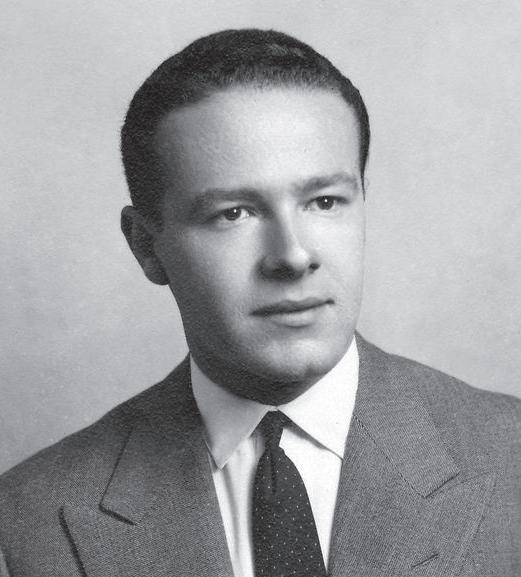
Alessandro “Alex” Treves died on Dec. 12, 2020, at the age of 91.
His family was Jewish and so Alex, his parents, an uncle, and his brother, Edoardo, left Italy in May of 1940 on a ship headed for New York City. They were denied entry into the United States but were allowed to continue to Cuba where they lived until they finally got permission to enter the United
States in December.
The two brothers adopted the more American names of Alexander and Edward, attended public schools, and were accepted at Rutgers University. Both brothers fenced and both qualified for Rutgers’ 1948 NCAA team with Edward fencing foil and Alex fencing sabre but were both eliminated in the preliminary round. Alex went on to also make Rutgers’ 1949 and 1950 NCAA teams, winning the individual sabre championship both years which helped Rutgers win the team title in 1949 and place second in 1950. In 2000, Alex was elected to the Rutgers Sports Hall of Fame.
At the Olympic Games Helsinki 1952, Alex fenced in the sabre team event. The U.S. team defeated the Swiss, German, and Polish teams to make the final round robin of four teams but then lost to Hungary, Italy, and France to finish in fourth place.
Alex is predeceased by his beloved parents and brother Edoardo (Dino). He is survived by his wife Marilou Geiger Treves, children Marco and Alessandra, and a host of relatives and friends.


Mary Anne Marchino Witchger (swimming, 1956)
Mary Anne Marchino Witchger died on Jan. 29, 2021, at the age of 83.
Mary Anne was an accomplished swimmer. She trained at the Riviera Country Club and later at the Indianapolis Athletic Club where she met Eugene “Gene” Witchger. She swam the 100-meter backstroke at the Olympic Games Melbourne 1956.
After graduating from Purdue University, she married Gene and began her greatest accomplishment of wife and mother. Together they created, crafted, travelled the world, and loved spending time with their family and friends. A woman of many interests and talents, she taught kindergarten, owned a business, was a collector, and channeled her creativity through painting, needlework and basket making, she enjoyed golf and especially her two holes in ones!
Throughout their marriage, they lived in Indianapolis; Roanoke, Virginia; London; New Canaan, Connecticut; San Juan, Puerto Rico and finally settled in Kiawah Island, South Carolina. She was an active member of Holy Spirit Catholic Church where she and Gene deepened their faith and friendships were formed.
For over 50 years, cherished memories have been made at the annual vacation to Holden Beach with her ever-growing family and extended family. She had a special knack for listening and making each person feel valued and loved.
Mary Anne is survived by her husband of 58 years, Eugene Wolf Witchger and their five children and spouses, Gene (Edie), Ann (Torsten Busch), Mary Beth Mugnier (Greg), Wendy Wade (George), Brian (Tara). She was lovingly referred to as “Grammie” to her 22 grandchildren and 9 great-grandchildren.

Company launching first-of-its-kind program offering nearly $5 million in sponsorship opportunities and support to all U.S. Paralympic athletes
In an effort to further support Paralympic athletes as they pursue their sport dreams and in partnership with the United States Olympic & Paralympic Committee, Toyota is excited to make history with the creation of nearly $5 million in stipend and sponsorship opportunities that will directly impact the lives of eligible U.S. Paralympic athletes aiming to compete at the Paralympic Games Tokyo 2020 and the Paralympic Winter Games Beijing 2022.
Toyota believes that mobility goes beyond cars and wants to support people in their efforts to get across town, across a room, and through life. Toyota also believes in the power of sport, and its ability to connect people with diverse backgrounds as they compete with mutual respect towards a common goal. Through sport, the Olympic and Paralympic Games bring together the entire world to celebrate the highest realization of humanity, and it is the elite Paralympic athletes who truly demonstrate that when a person is free to move, anything is possible.
“As a TOP partner of the Olympics and Paralympics, and in alignment with the values of Toyota, we’re proud to have the opportunity to partner with all eligible Team USA Paralympic athletes who will represent our country on the world’s largest stage,” said Lisa Materazzo, group vice president, Toyota Marketing, Toyota Motor North America. “We welcome these athletes into the Team Toyota family and look forward to playing just a small role in their journey to Tokyo and Beijing. We hope our support will contribute to driving more awareness for all Paralympic athletes worldwide and the Paralympic Games”
In addition to the fund, Toyota has been an active supporter of Paralympic athletes and adaptive sports. In 2015, the company became the official worldwide mobility partner of the Olympic and Paralympic Committees for the 2017-2024 period. In addition, Toyota is a proud partner of Team USA and several Paralympic National Governing Bodies (NGBs) and Paralympic national teams, including: the National Wheelchair Basketball Association; U.S. Paralympics Alpine Skiing; U.S. Paralympics Cycling; U.S. Paralympics Nordic Skiing; U.S. Paralympics Snowboarding; U.S. Paralympics Swimming; U.S. Paralympics Track & Field; USA Curling and the USA Wheelchair National Curling Team; USA Hockey and the U.S. National Sled Team; and USA Triathlon and the Toyota U.S. Paratriathlon National Team. Toyota also has long-standing relationships with the Adaptive Action Sports (AAS) and the Challenged Athletes Foundation® (CAF).
OFFICIAL TEAM USA NETWORK: teamusa.org/Team-USA-Athlete-Services/Alumni
Join our private groups on Facebook and LinkedIn to stay connected.
FACEBOOK:
United States Olympians and Paralympians
1,200 members
LINKEDIN:
United States Olympians and Paralympians (364 members)
Olympic and Paralympic Alumni (12,876 members international)
CONNECT WITH LA 2028:
Youtube: youtube.com/channel/UC0HoUCfNT_13tkuxvtdnyA
Instagram: instagram.com/la2028Games/
Twitter: twitter.com/LA2028
Facebook: facebook.com/la2028/
PRESIDENT
Caryn Davies (Rowing, 2004, 2008, 2012)
Contact: caryn.davies@gmail.com
VICE PRESIDENTS
Bob Balk (Para Skiing, 1994, 1998, 2002, 2006; Para Athletics, 1996, 2000)
Contact: bob.balk@outlook.com
Allison Baver (Short Track Speedskating, 2002, 2006, 2010)
Contact: allison@allisonbaver.com
Bruce M. Furniss (Swimming, 1976)
Contact: bfurfam@msn.com
Sharon A. Jewell (Taekwondo, 1988)
Contact: neolympianparalympian@gmail.com
Kibwe’ R. Johnson (Track & Field, 2012, 2016)
Contact: kibwe.johnson@olympian.org
John C. Moffet (Swimming, 1980, 1984)
Contact: john.moffet@olympian.org
Lydia R. Murphy-Stephans (Long Track Speedskating, 1984)
Contact: lydiastephans@gmail.com
USOPA SPECIAL OFFICER
Jan Palchikoff (Rowing, 1976, 1980)
Contact: jpalch3@gmail.com
IMMEDIATE PAST PRESIDENT
Dick Fosbury (Track and Field, 1968)
Contact: rfosbury68@gmail.com
PAST PRESIDENTS
Gary Hall Sr. (Swimming, 1968, 1972, 1976)
Contact: garyhallsr@mac.com
Willie Banks (Track and Field, 1980, 1984, 1988)
Contact: bankshw@hotmail.com
John Naber (Swimming, 1976)
Contact: john@johnnaber.com
Bill Toomey (Track and Field, 1968)
Contact: williamtoomey@gmail.com
USOPC Chairman
Susanne Lyons
Anita L. DeFrantz (Rowing, 1976, 1980)
David Haggerty
Kikkan Randall (Cross Country Skiing, 2002, 2006, 2010, 2014, 2018)
Rich Bender
Cheri Blauwet (Para Track & Field, 2000, 2004, 2008)
Beth Brooke-Marciniak
Gordy Crawford
Muffy Davis (Para Skiing, 1998, 2002; Para Cycling, 2012)
Donna de Varona (Swimming, 1960, 1964)
Steve Mesler (Bobsled, 2002, 2006, 2010)
Vivek T. Murthy
John Naber (Swimming, 1976)
Dexter Paine
Daria Schneider
Brad Snyder (Para Swimming, 2012, 2016)
Kevin White
Robert L. Wood
Sarah Hirshland
USOPC Chief Executive Officer
Sarah Hirshland
SENIOR EDITOR
Cynthia E. Stinger (Team Handball, 1984, 1988, 1992)
ASSOCIATE EDITOR
Christine Taylor
COPY EDITOR
Hannah Curley
PRODUCTION DIRECTOR
O’Shea Design
Photos by: Getty Images, Duomo, Crawford Family USOPC Archives, AP and other sources.
Alabama Olympians & Paralympians
President: Jennifer Chandler Stevenson (diving, 1976, 1980) (205) 313-7436
Arizona Olympians & Paralympians
President: TBD (elections pending)
Austin-San Antonio Olympians & Paralympians
President: Randy Lipscher (field hockey, 1984) (512) 699-0962
Colorado Olympians & Paralympians
President: Michelle Dusserre Farrell (gymnastics, 1984) (719) 330-4030
Dallas/Fort Worth Olympians & Paralympians
President: Sammy Walker (weightlifting, 1976) (469) 955-3158
Florida Olympians & Paralympians
President: Carrie Zimmerman (gymnastics, 1976) (850) 212-7846
Georgia Olympians & Paralympians
TBD (elections pending)
Hawaii Olympians & Paralympians
President: Dan Drown (water polo, 1964) (808) 295-7840
Houston Olympians & Paralympians
President: Jacqueline Washington (track and field, 1984) (832) 488-8573
Idaho Olympians & Paralympians
President: Dick Fosbury (track and field, 1968) (208) 720-2352
Indiana Olympians & Paralympians
President: Ollan Cassell (track and field, 1964) (317) 253-1162
Louisiana Olympians & Paralympians
President: Hollis Conway (track and field, 1988, 1992) (318) 237-2382
Michigan Olympians & Paralympians
President: Gary F. Morgan (track and field, 1988) (248) 396-4936
Midwest Olympians & Paralympians
President: Diane Simpson (rhythmic gymnastics, 1988) (847) 452-7843
Minnesota Olympians & Paralympians
President: Katrina Radke (swimming, 1988) (651) 335-3647
Missouri/Illinois Olympians & Paralympians
President: John Carenza (soccer, 1972) (314) 662-4990
National Capital Area Olympians & Paralympians
President: Arlene Limas (taekwondo, 1988) (540) 720-1988
Nevada Olympians & Paralympians
TBD (elections pending)
New England Area Olympians & Paralympians
President: Sharon Ann Jewell (taekwondo, 1988) (404) 668-7896
New Mexico Olympians & Paralympians
President: Trish K. Porter Topmiller (track and field, 1988) (505) 459-9732
Northern California Olympians & Paralympians
President: Julia Nichols (rowing, 2012) (925) 577-7638
NY, NJ, CT Olympians & Paralympians
President: Craig Gilbert (team handball, 1984) (973) 975-2807
Oklahoma Olympians & Paralympians
President: Josh C. Davis (swimming, 1996, 2000) (210) 889-7667
Oregon Olympians & Paralympians
President: John McArdle (track and field, 1980) (541) 917-4210
San Diego Olympians & Paralympians
President: Erin Aldrich-Shean (track and field, 2000) (214) 725-9926
Southern California Olympians & Paralympians
President: John Moffet (swimming, 1980, 1984) (310) 994-4647
Utah Olympians & Paralympians
President: Bill Schuffenhauer (bobsled, 2002, 2006, 2010) (385) 237-7037
Washington Olympians & Paralympians
President: Caroline Holmes (gymnastics, 1968) (206) 246-2934
Western PA-OH-WV Olympians & Paralympians
TBD (elections pending)
No chapter in your area?
Interested in starting a chapter?
Contact the U.S. Olympians & Paralympians
Association office for details at: (800) 717-7555
www.teamusa.org